Over the past three years, we’ve traveled extensively throughout Germany and explored many different corners of our homeland. However, we’d never been to the Saale-Unstrut region before, so we were all the more delighted that we had the opportunity to do so this year. Before our trip, we naturally did a bit of online research and repeatedly came across topics such as wine, relaxation, and history.
With empty memory cards, charged camera batteries, and a few tips from our Instagram community, we set off for the Saale-Unstrut region. We were very excited to see what awaited us there. In the following article, we’ll take you on this journey again and show you 7 great highlights of the Saale-Unstrut region. Have fun browsing!
- General information about the Saale-Unstrut region
- Explore the region with an interactive app
- Saale-Unstrut sights and highlights
- 1. Merseburg & Merseburg Cathedral
- 2. Naumburg Cathedral
- 3. Scavenger hunt in Jena
- 4. Cistercian monastery Schulpforta
- 5. Saale-Unstrut highlights: Bad Sulza
- 6. Cycling tour along the Geiseltalsee
- 7. The Saale-Unstrut wine region
- More sights & Highlights
- Conclusion on the interactive web app
- Our accommodation in Freyburg
- Conclusion on the Saale-Unstrut region
General information about the Saale-Unstrut region
The region stretches predominantly along the two rivers Saale and Unstrut and is located in southern Saxony-Anhalt and northeastern Thuringia. Particularly noteworthy are the region’s numerous cultural and historical sites, monuments, and sights, such as Naumburg Cathedral, Neuenburg Castle in Freyburg, and the Cistercian monastery of Schulpforta. The High Middle Ages was also the heyday of Romanesque architecture, and so you’ll find numerous magnificent medieval buildings in this region.
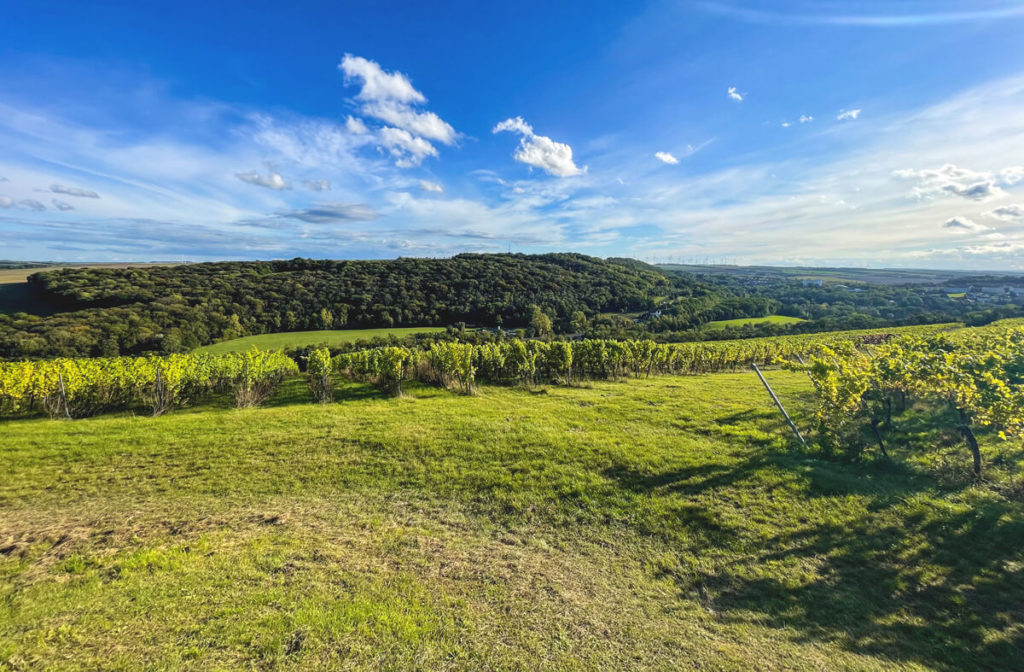
The Saale-Unstrut region is primarily known for its wine production and is often called the “Tuscany of the North.” Here, in Germany’s northernmost quality wine-growing region, you won’t have to look far for vineyards, steep terraces, and romantic vineyard cottages. They are part of the landscape and can be found almost everywhere. More than 60 wineries await you, offering not only wine and regional specialties, but also tours and wine tastings, among other things. You can find an overview of the wineries here: Saale-Unstrut Wineries.
Explore the region with an interactive app
The special thing about our trip was that we were able to explore the region with the help of an interactive web app. It felt like a “treasure hunt,” as we had to solve various puzzles in very different locations. This way, we also discovered lesser-known places that we probably would have overlooked or even missed without the web app. The app features a total of 30 stations, each with 3 to 5 tasks, which can be explored in any order.
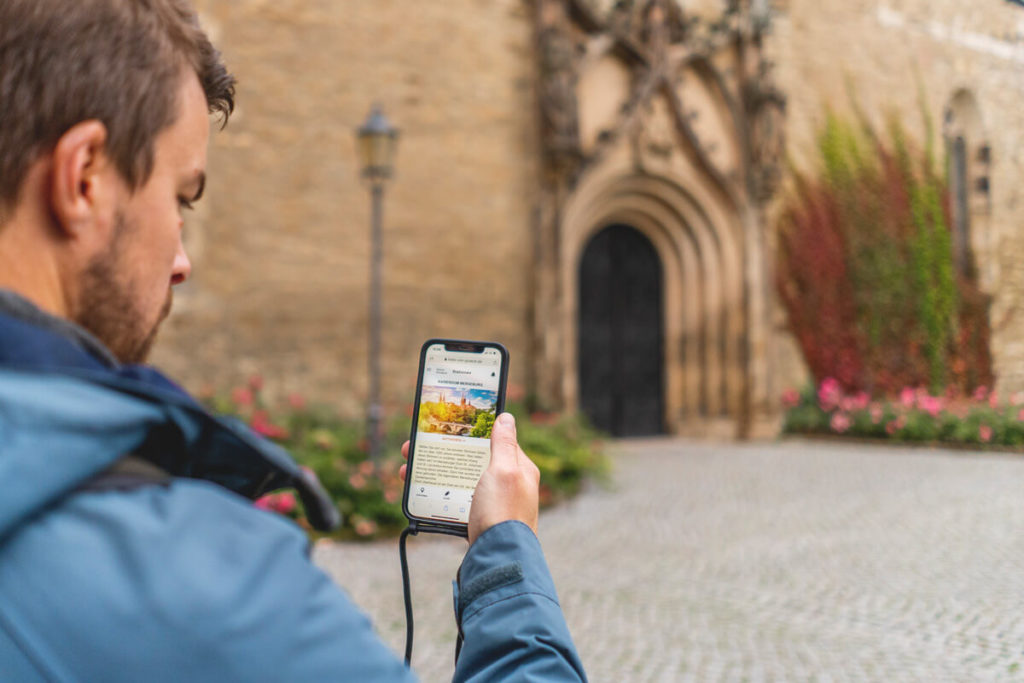
The more tasks we completed, the deeper we immersed ourselves in the story. The narrator, Moritz, accompanied us through this diverse region and sent us various images, voice messages, and text messages. This gave us the feeling of being in direct communication with him, which was pretty cool. During our journey, we were able to visit 5 stations in the app and complete 20 of the 22 tasks. It was a completely new way for us to explore a region and definitely piqued our interest.
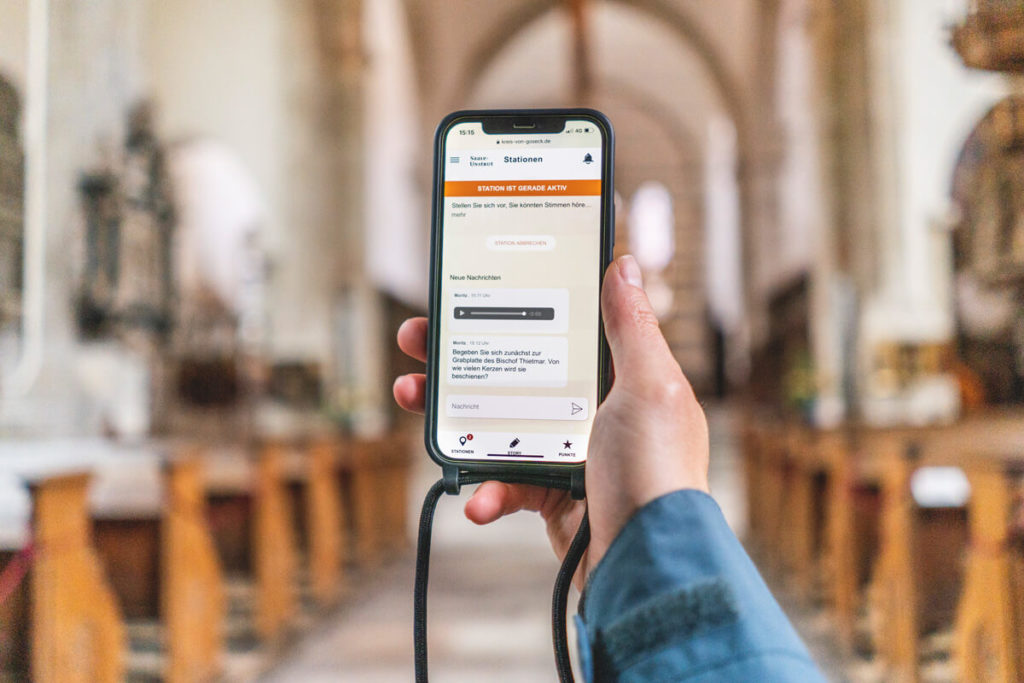
Setup: The web app can be used free of charge in the browser on any internet-enabled smartphone. To start the game, all you have to do is register your mobile number. Enter your number and you’ll receive a password via SMS. With your number and password, you can now log in and get started right away. Select a station from the overview and activate it. Moritz will contact you and send you the first tasks. Why not try it out for yourself? Click here for the web app: www.kreis-von-goseck.de.
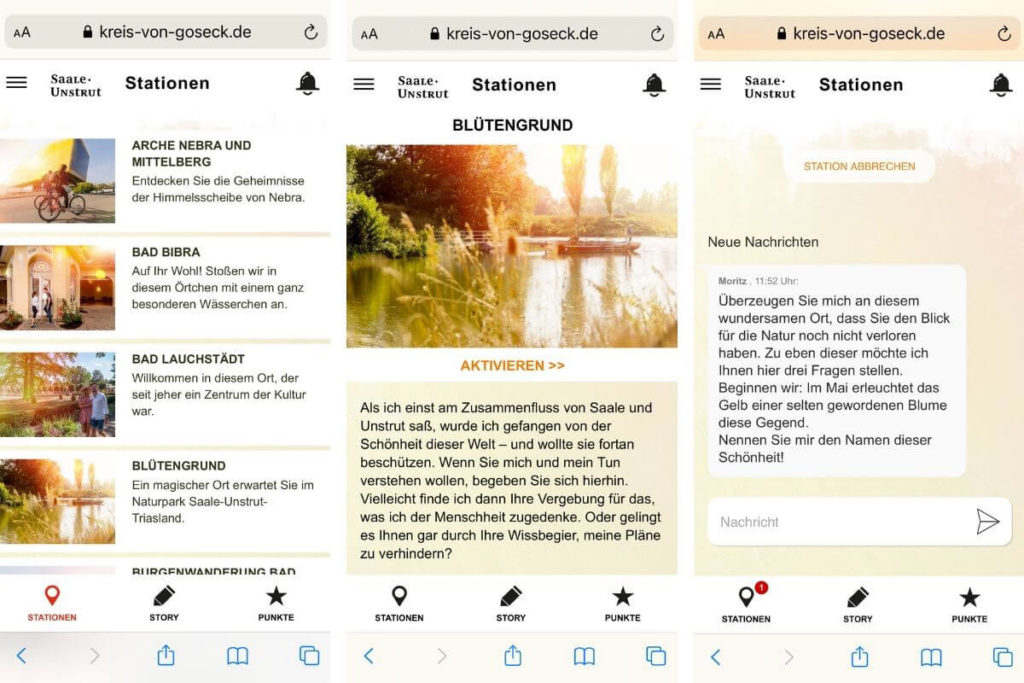
Saale-Unstrut Sights and Highlights
As already mentioned, there’s a lot to discover in the Saale-Unstrut region. In the following section, we’ll show you which places and sights we visited and where we particularly enjoyed ourselves. We’ve also marked the top Saale-Unstrut highlights for you on the map below:
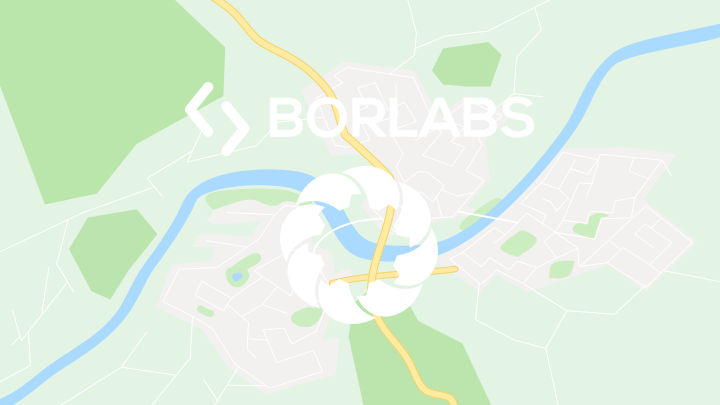
By loading the map, you accept Google’s privacy policy.
Learn more
Load map
1. Merseburg & Merseburg Cathedral
Our first stop was the small town of Merseburg, which is located just 30 km west of Leipzig. We strolled through the charming university town and just let ourselves go. First we went over the Neumarkt Bridge, then along the banks of the Saale, across the castle garden, past the Ständehaus Merseburg, before we finally reached Merseburg Castle and Merseburg Cathedral. Here we launched the interactive web app and completed our first tasks.
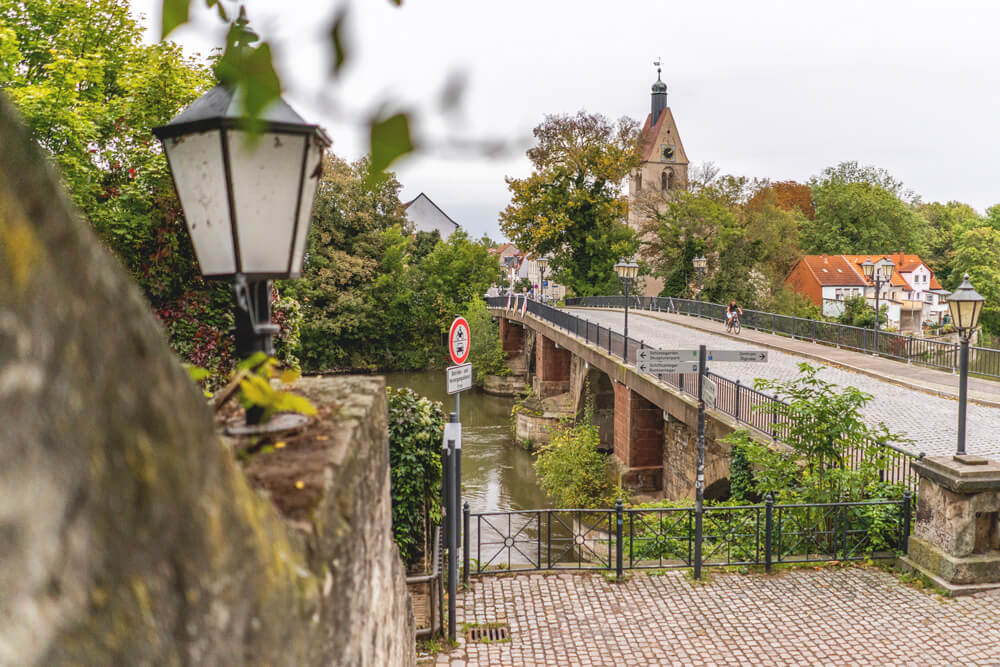
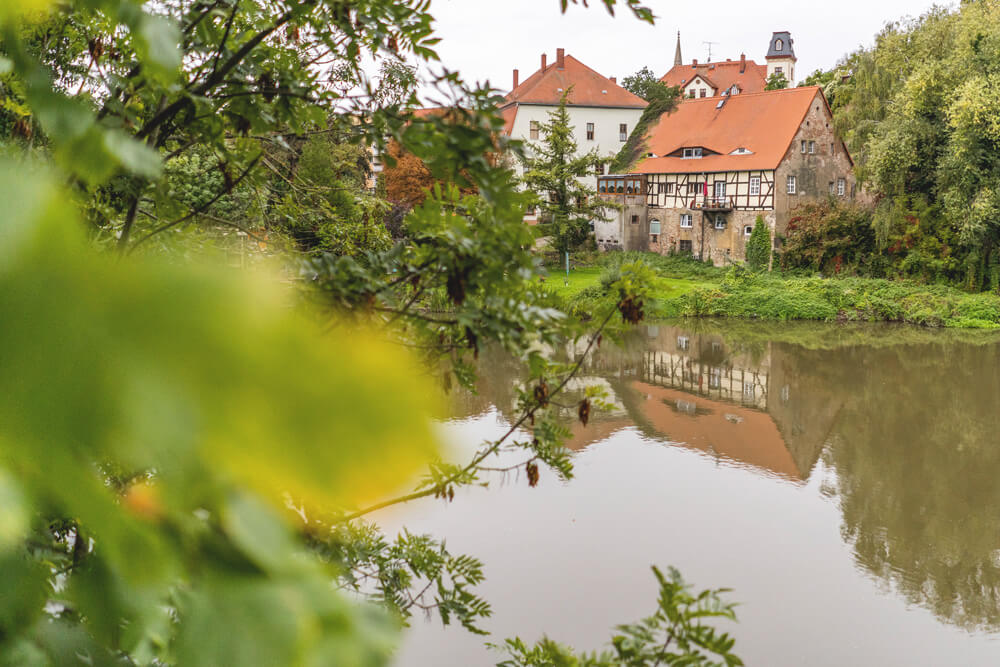
The foundation stone for the Merseburg Cathedral was laid in 1015 by Bishop Thietmar of Merseburg. Today, the cathedral is considered one of the most important cathedral buildings in Germany and offers several highlights worth seeing. After passing the 13th-century vestibule, we reached the nave, where the impressive Ladegast organ immediately caught our eye. An incredible 5,687 pipes were installed here. Incredible, right? If you would like to hear the sound of this organ, you should not miss the annual Merseburg Organ Days.
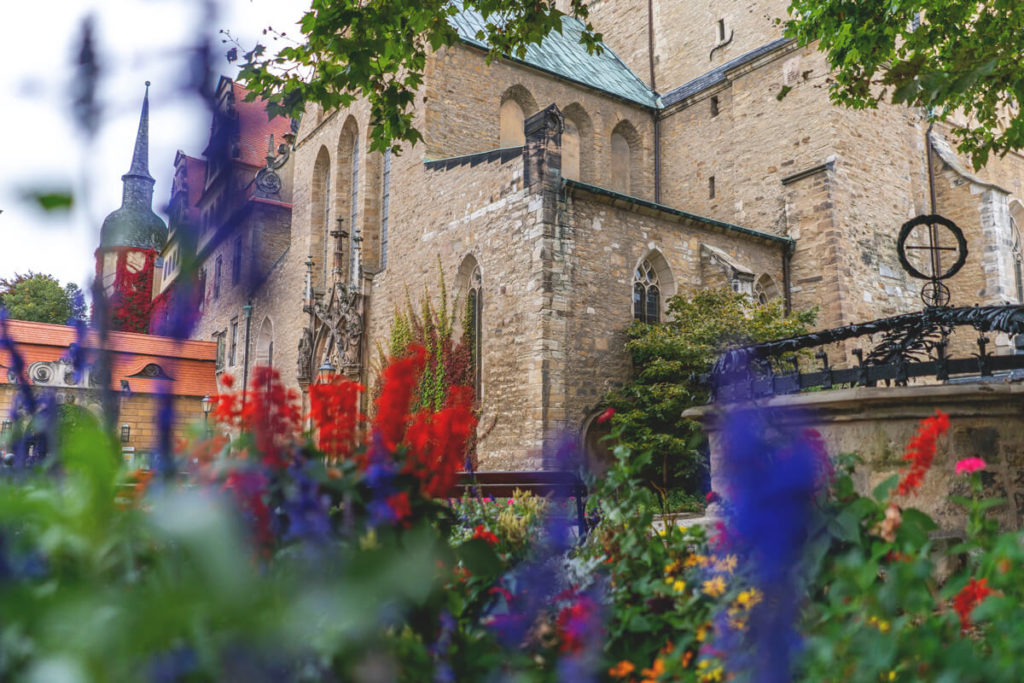
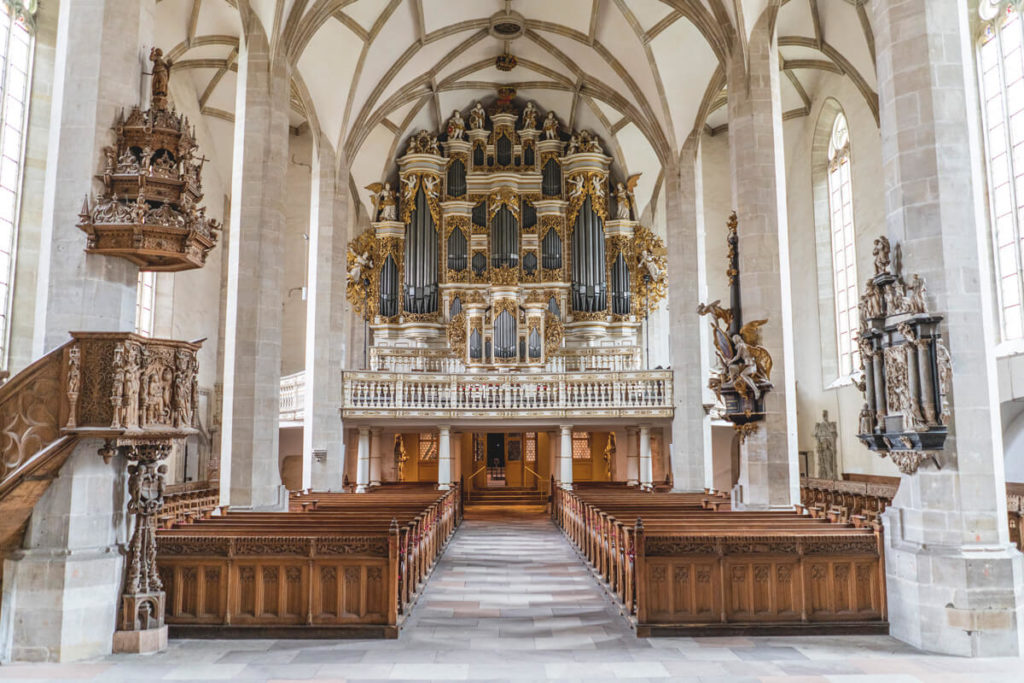
By the way, you can reach the impressive roof structure of the cathedral via the Royal Staircase. From the viewing platform of the southwest tower, you have a fantastic view of the cathedral and the city (more about that here). Moritz gave us a total of five tasks, all of which we were able to complete. Sometimes we had to count the candles in the Bishop’s Chapel, sometimes we had to pay attention to smaller details in the crypt. Here in the cathedral, we also learned about the so-called “Merseburg Magic Spells.” Conclusion: Overall, the city itself is very charming, and the cathedral is truly worth seeing. In our opinion, the city of Merseburg makes a good stopover.
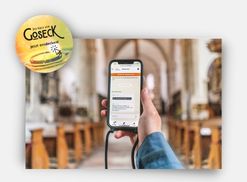
- 5 tasks in Merseburg Cathedral
- Admission: €7.50 for adults
- Difficulty level: easy – medium
2. Naumburg Cathedral
On the second day, we began our journey of discovery through Saale-Unstrut in Naumburg, a small town in the south of Saxony-Anhalt. The city, with a population of just under 35,000, welcomed us with persistent rain, but we didn’t mind, because Moritz first took us to Naumburg Cathedral.
The cathedral is by far one of the top sights on the so-called “Romanesque Road” and was declared a World Heritage Site by UNESCO in 2018. The three-aisled basilica with its four towers, cloister, and cathedral garden was built from 1213 to around 1250 and extends over a total length of more than 100 meters.
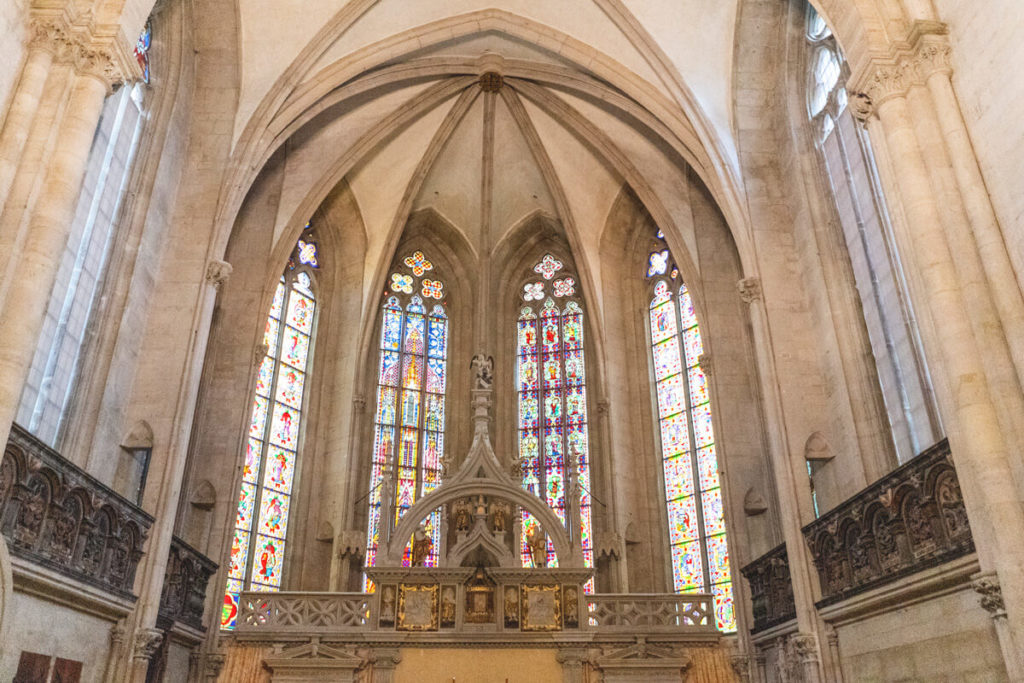

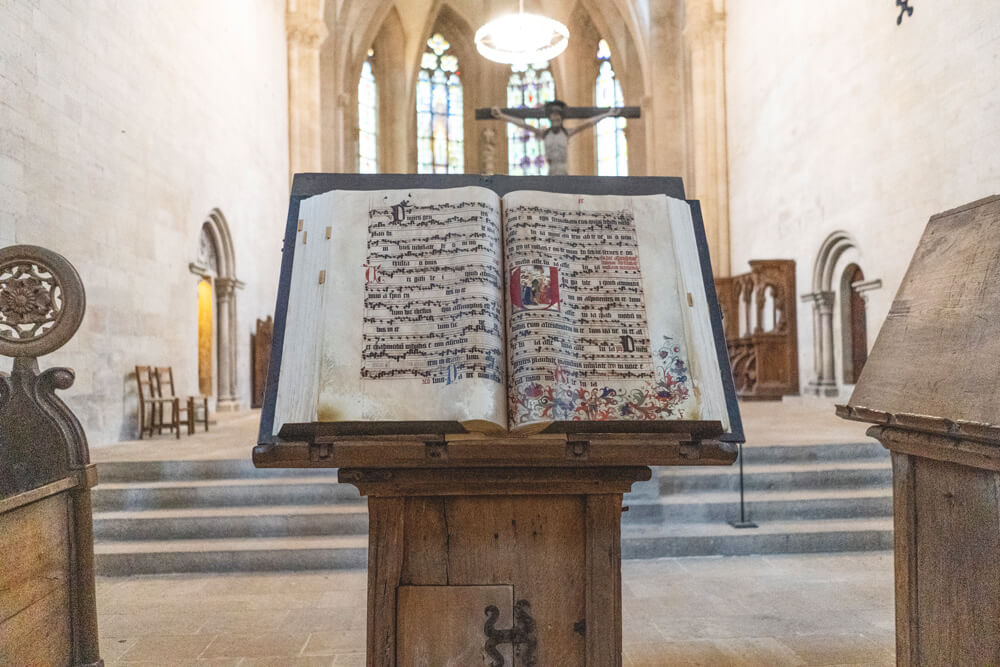

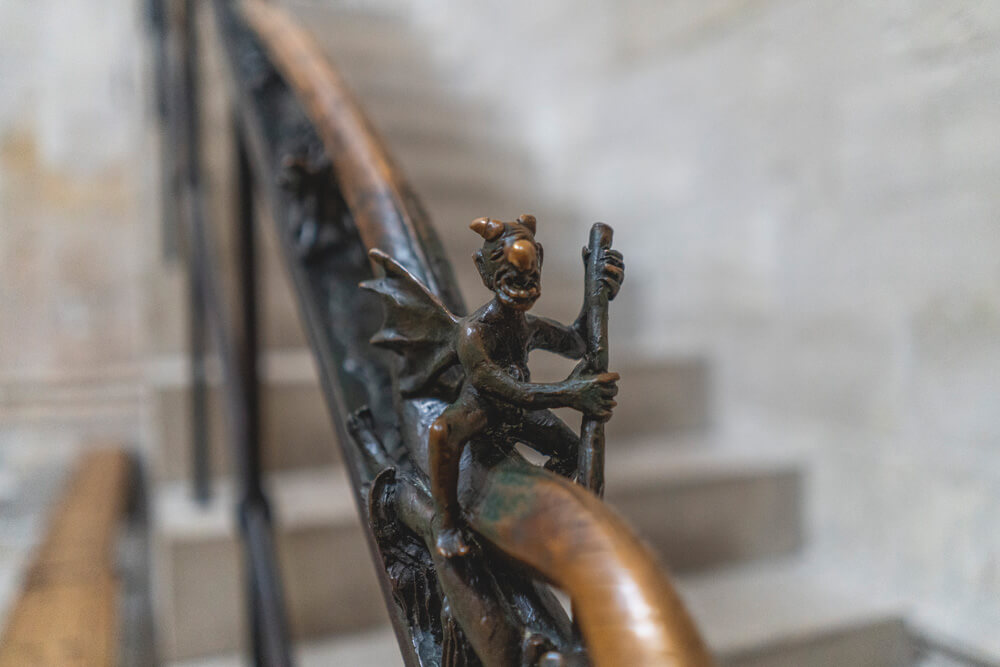

UNESCO World Heritage Site
We entered Naumburg Cathedral (admission €7.50 per person), grabbed an audio guide, and launched the web app “Kreis von Goseck.” We waited anxiously for Moritz’s first task as we slowly strolled toward the nave. It’s always impressive to see such imposing buildings created by human hands so many centuries ago.
In Naumburg Cathedral, we were immediately struck by the many details, be it imaginative figures on the staircase, colorful stained glass windows, the crucifix in the crypt, the world-famous twelve donor figures in the west choir, or the medieval choir stalls. No matter where you looked, different stories were being told throughout the cathedral.
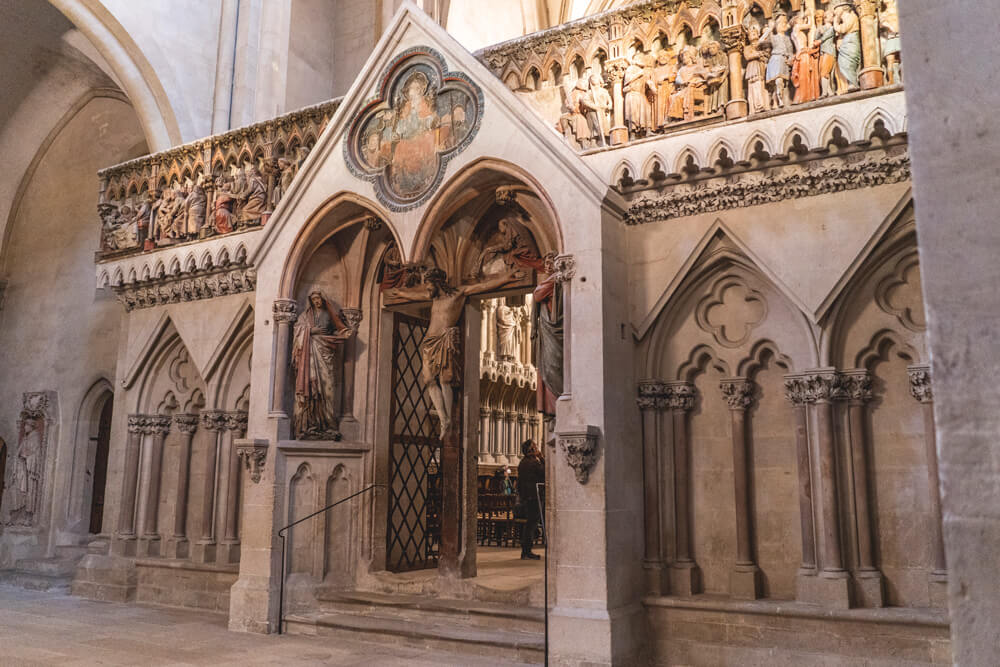

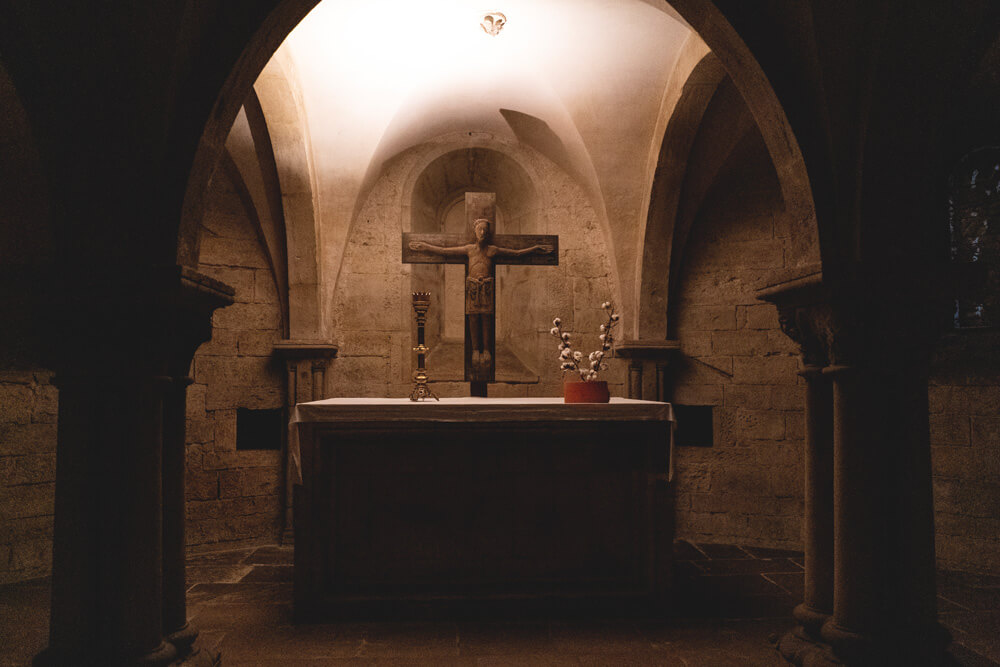

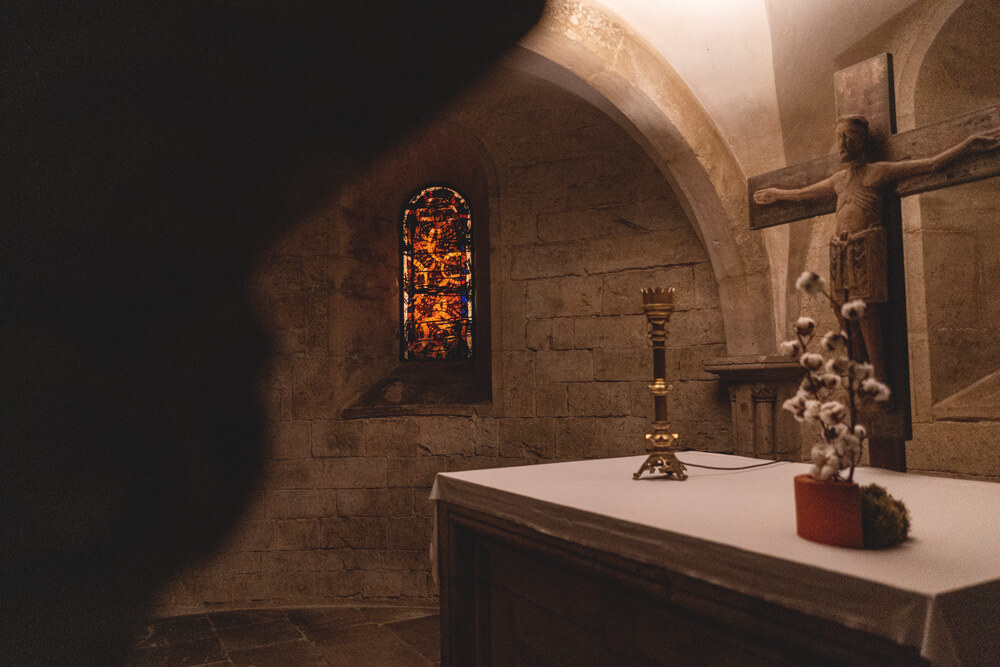

The tasks in the web app allowed us to take a close look at the cathedral, paying particular attention to the many small details. In the end, we were able to solve the five tricky tasks and conclude our tour outside in the almost one-hectare cathedral garden. Afterwards, we strolled through Naumburg’s very pretty old town and enjoyed a coffee.
The web app also has a “Naumburg” station with three more tasks, but we simply put our phones aside for the moment. Other sights in Naumburg include the market square, St. Wenceslas Church with its observation tower, the Marientor, the town hall, the Naumburg tram, the Jüdengasse, the town museum, and the Nietzsche House.
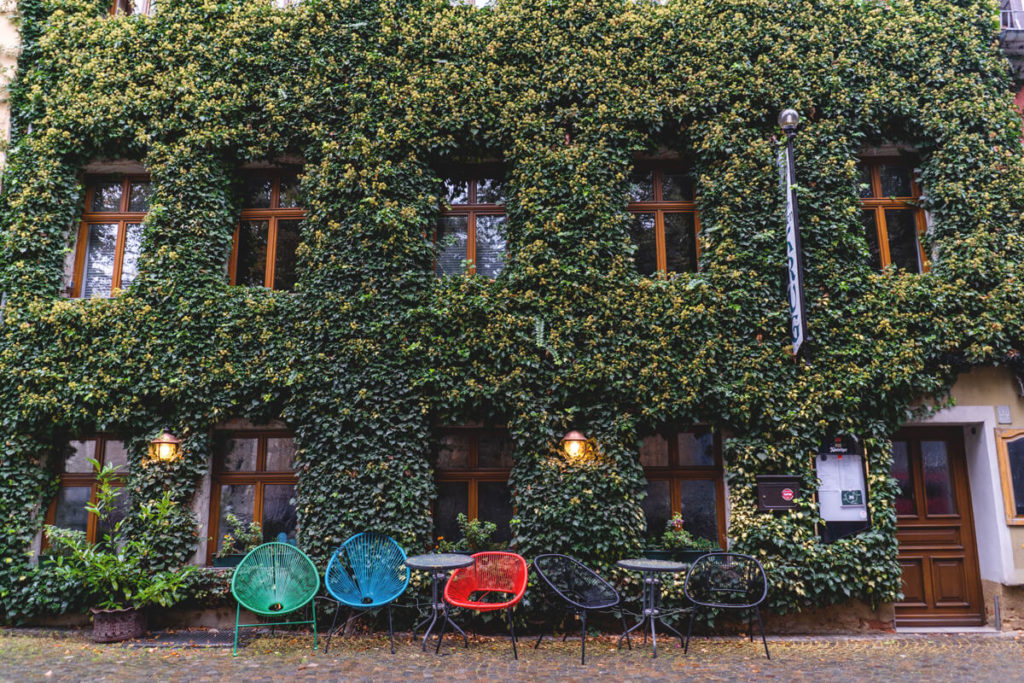







- 5 tasks in Naumburg Cathedral
- Admission: €7.50 for adults
- Difficulty level: medium
3. Scavenger hunt in Jena
Finally, it was the city of Jena‘s turn, and we were thrilled to explore this German university town for a longer afternoon. With around 111,000 inhabitants, Jena is the second-largest city in Thuringia and is located about 35 kilometers south of Naumburg. We activated the “Jena” station in the web app and followed the instructions from the narrator, Moritz. We visited some really cool Jena highlights and were able to get a first impression of the city.
Zeiss Planetarium
Would you also like to reach for the stars? Then visit the world’s oldest planetarium (opened July 18, 1926). Here in the Zeiss Planetarium, not only are fixed stars and planets impressively projected onto the inside of the white dome, but various multimedia educational and entertainment events are also presented (see program schedule). During our journey through space, we visited our planets in the solar system as well as numerous stars and galaxies. Tickets start at €11 per person.
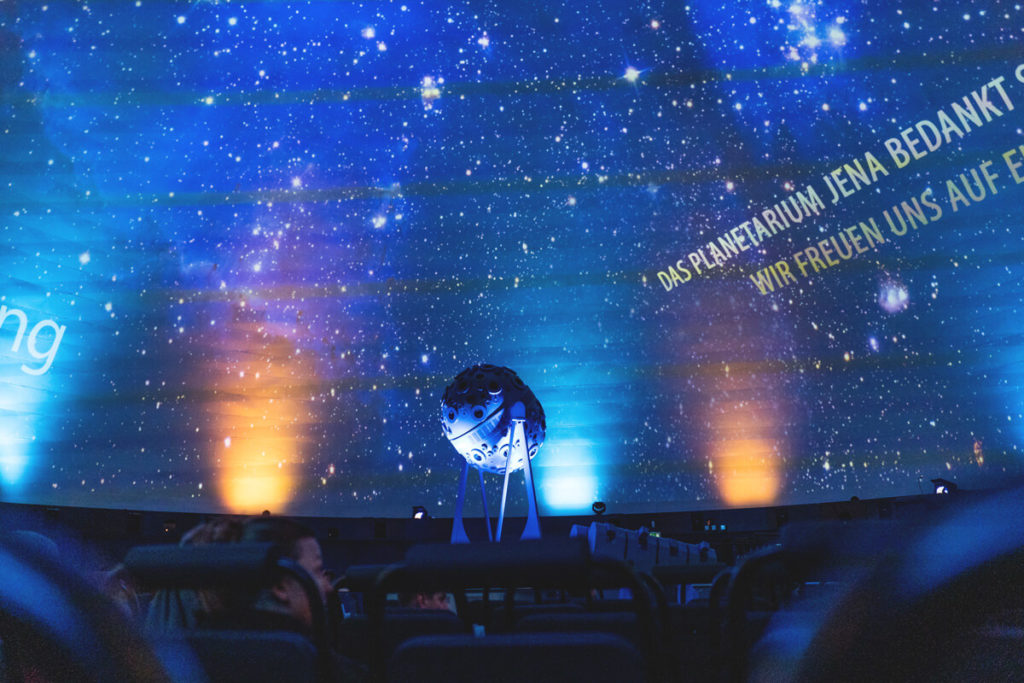

Botanical Garden
Right next to the planetarium is the city’s Botanical Garden, home to approximately 10,000 plants from all climate zones. It’s also the second oldest garden in Germany and, as a kind of “green lung,” contributes to improving the city’s climate. We strolled through the various greenhouses and were particularly amazed by the countless beautiful tropical plants.
For a brief moment, we felt like we were back in Asia. A memory of the time when we hiked through the rainforest on Sumatra. Another highlight for us was definitely the tiny Caribbean whistling frogs, which we could hear every now and then. The tasks in the web app naturally made us take a closer look to be able to answer the questions correctly. Admission costs €4 per person.



View from the JenTower
For a For a magnificent view of the city, we headed high up to the so-called “JenTower.” This office building is approximately 160 meters tall, including the antenna tower, and has an observation deck (28th floor) at a height of 128 meters. This allowed us to gaze over the rooftops just before sunset and sip a delicious espresso in the Scala Restaurant (27th – 29th floors). The ticket for the viewing platform costs only €4.50 per person.
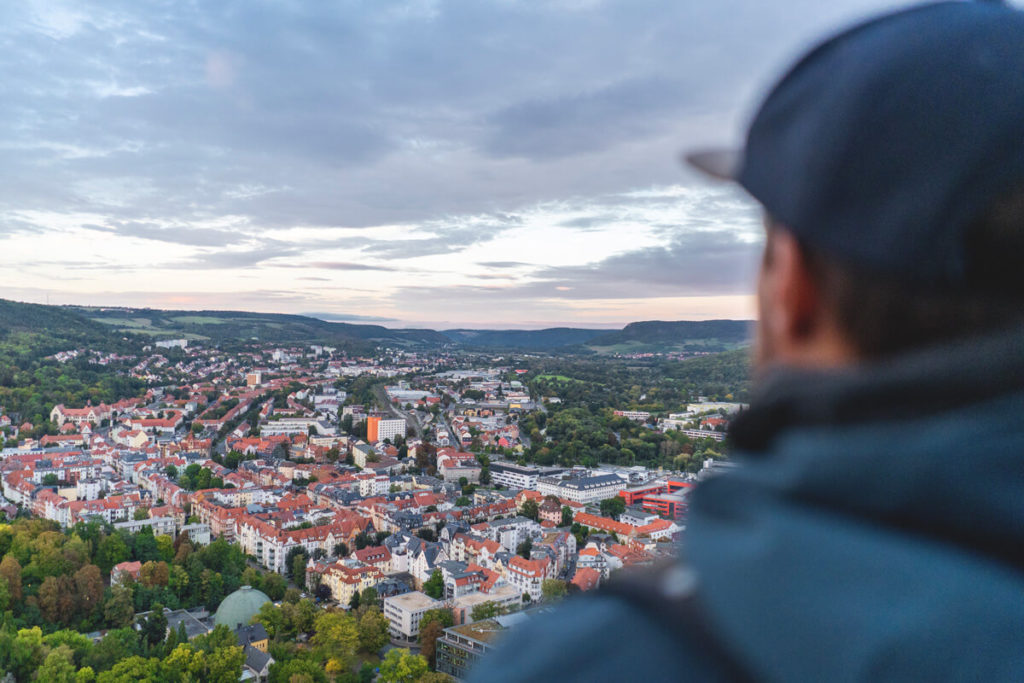

Trendy Wagnergasse
We were recommended a detour to Wagnergasse in Jena, where more than 15 cafés, bars, and restaurants awaited us. This alley used to be a thoroughfare, and until the 1970s, trams even ran along it. It’s said that even Goethe drove through here in his carriage.
Today, the so-called “Kneipengässchen” (little pub alley) is very popular, especially among students, businesspeople, and tourists, and is a real magnet. Small, charming shops invite you to browse and stroll. We made ourselves comfortable in the Café Stilbruch and rounded off the evening with a delicious meal.
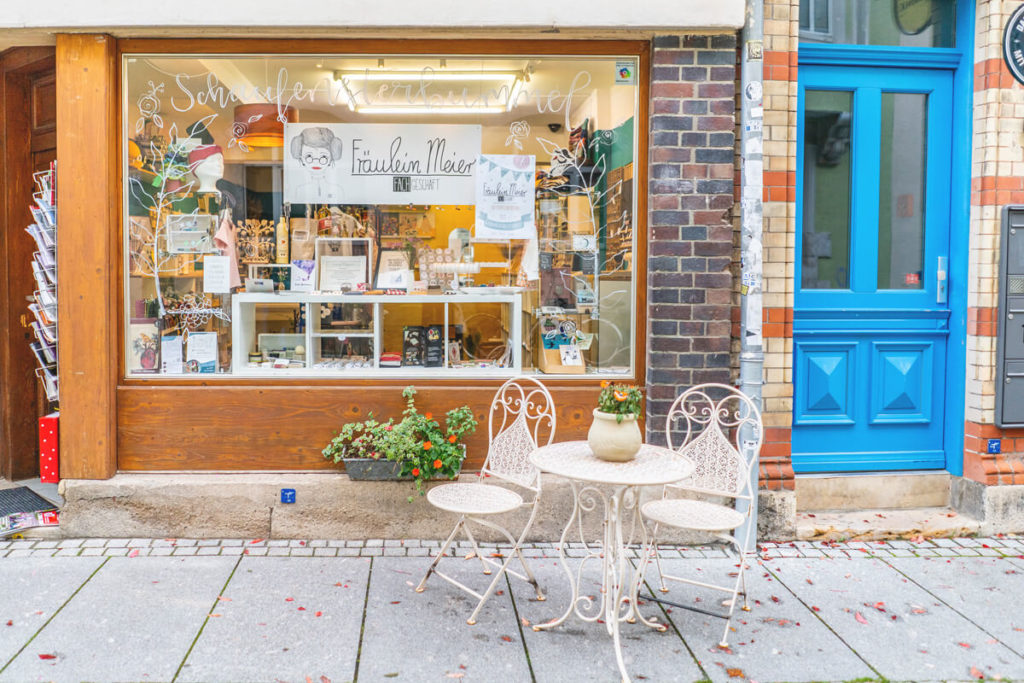

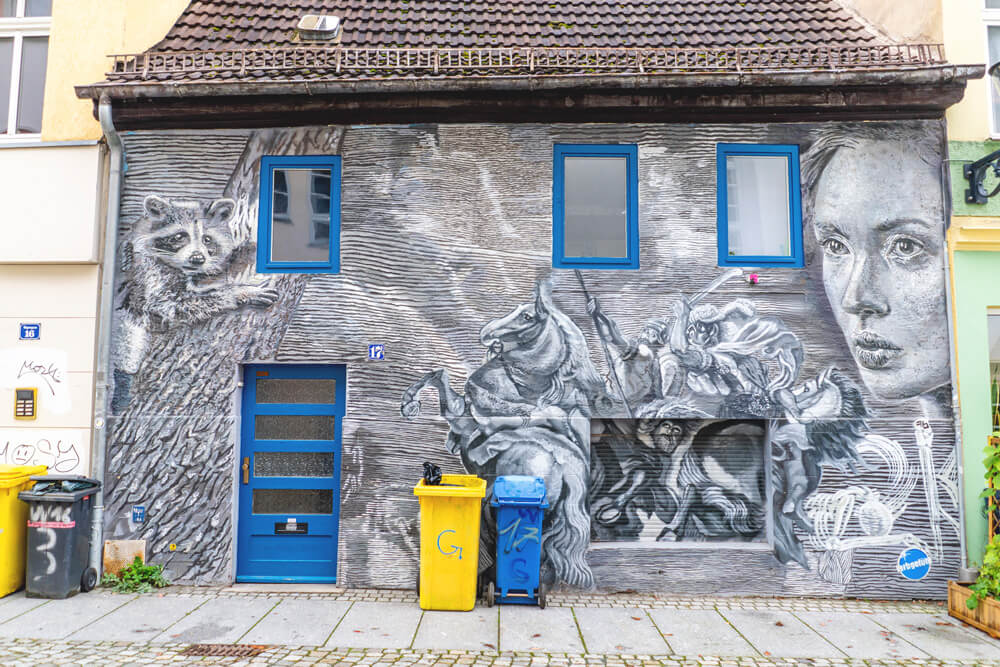

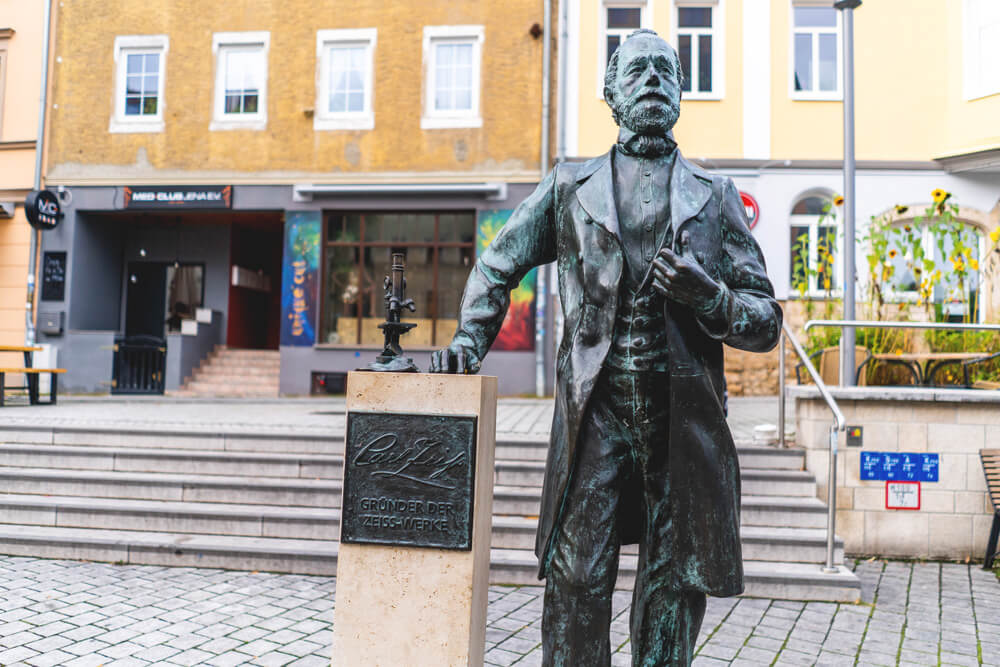

More Jena Sights
We had a little and strolled through the streets of Jena. We passed the Johannistor, Schiller’s Garden House (which was unfortunately closed), the Phyletic Museum, and the German Optical Museum (which has the largest collection of glasses). According to our community, the weekly market in Jena is also very popular. It takes place on Tuesdays, Thursdays, and Fridays from 7 a.m. to 5 p.m. on the market square, and on Saturdays from 1 p.m. to 5 p.m. Of course, we didn’t have enough time to see every corner of the city. But our first impressions were positive; Jena seems to be a really cool city.






- 5 things to do in Jena
- JenTower, Zeiss Planetarium & Botanical Garden
- Difficulty level: easy
4. Cistercian Monastery Schulpforta
We started the third day of our trip at the former Cistercian Monastery Schulpforta, which today serves as a state school for around 300 gifted students. The former monastery was founded in 1137 and is located between Naumburg and Bad Kösen. It wasn’t until 1543 that a very special educational institution was established in the former monastery building, which produced numerous famous graduates, such as Nietzsche, Klopstock, and Fichte.
As soon as we entered the school complex, still enclosed by the old monastery walls, we sensed a very special atmosphere. At that time, we were the only visitors on the grounds and were able to look around in peace. We started the “Schulpforta” station in the web app and waited for Moritz’s first instructions.
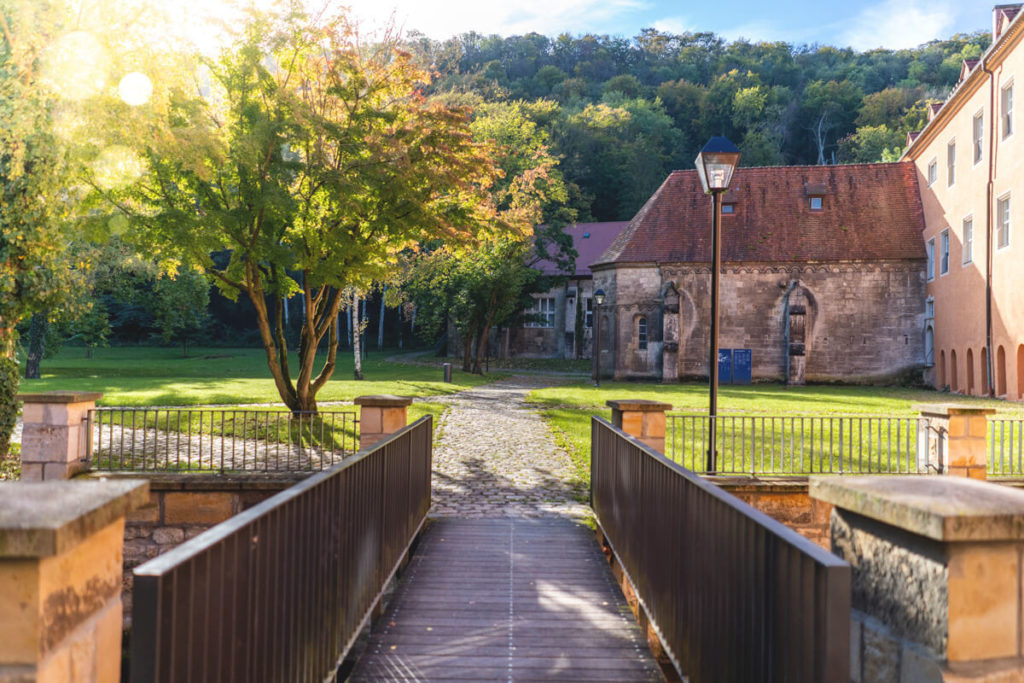



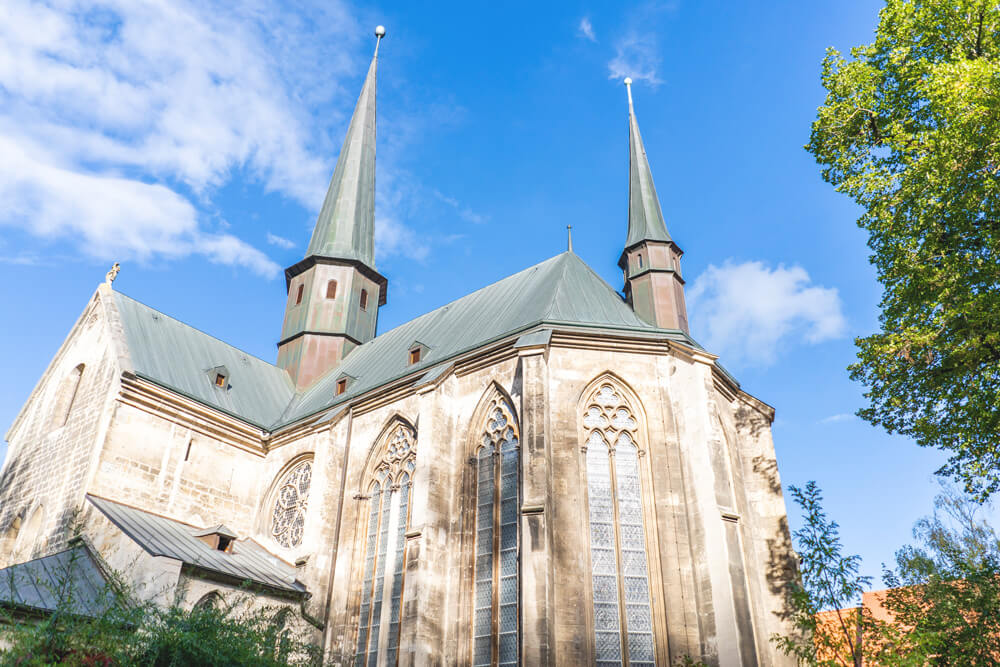

Saale-Unstrut: 500 Years of History in Schulpforta
The historic grounds include a church with a cloister, an old mill and barn, a former princely house, a gymnasium, a cemetery, teachers’ gardens, an observatory, a former hospice, a historic school library with approximately 80,000 volumes, and a beautiful park. Although we were only able to enter the church, all of these buildings exuded a very special charm, even from the outside.
As we began our scavenger hunt on the grounds, we also noticed the enormous tree in the school park, which is the third largest in Germany. The crown diameter is an incredible 40 meters! We took a walk through the park and kept wondering what life was like here many centuries ago. We would have loved to have beamed ourselves back to that time for a short moment.
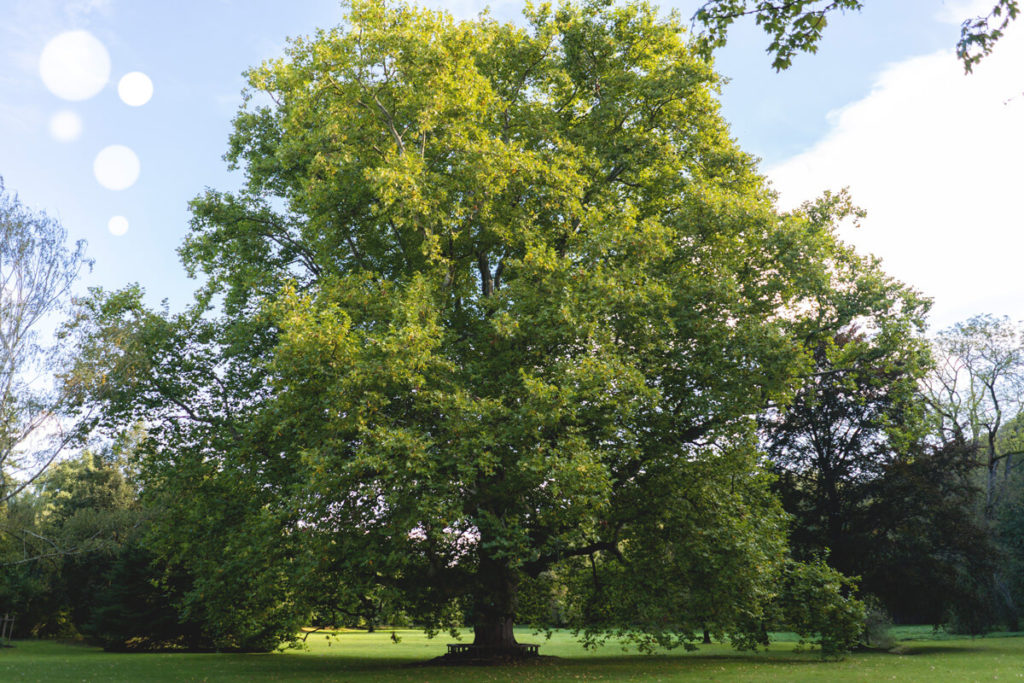

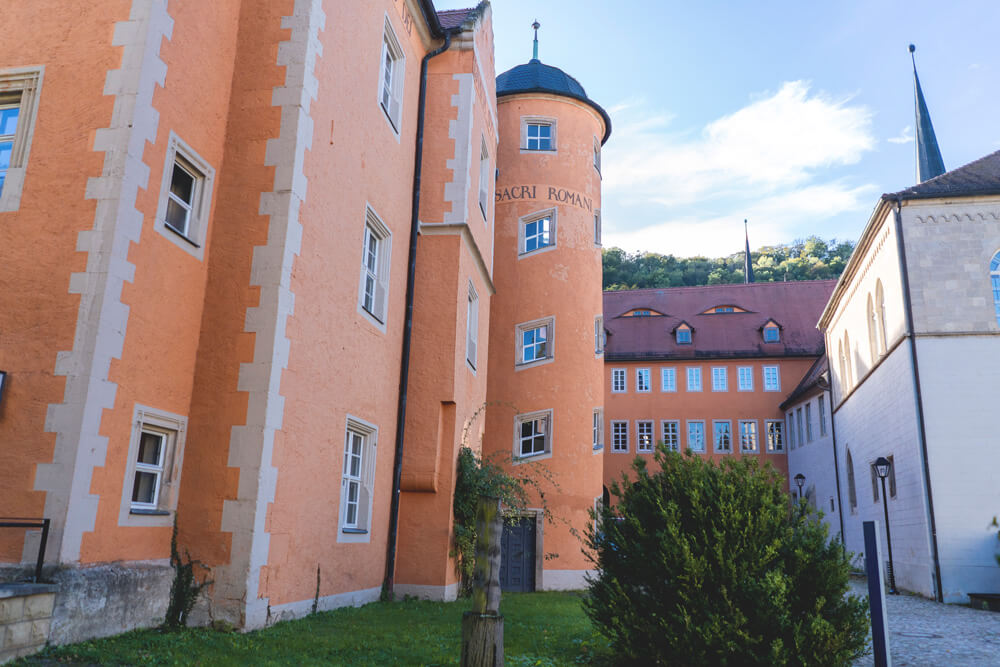

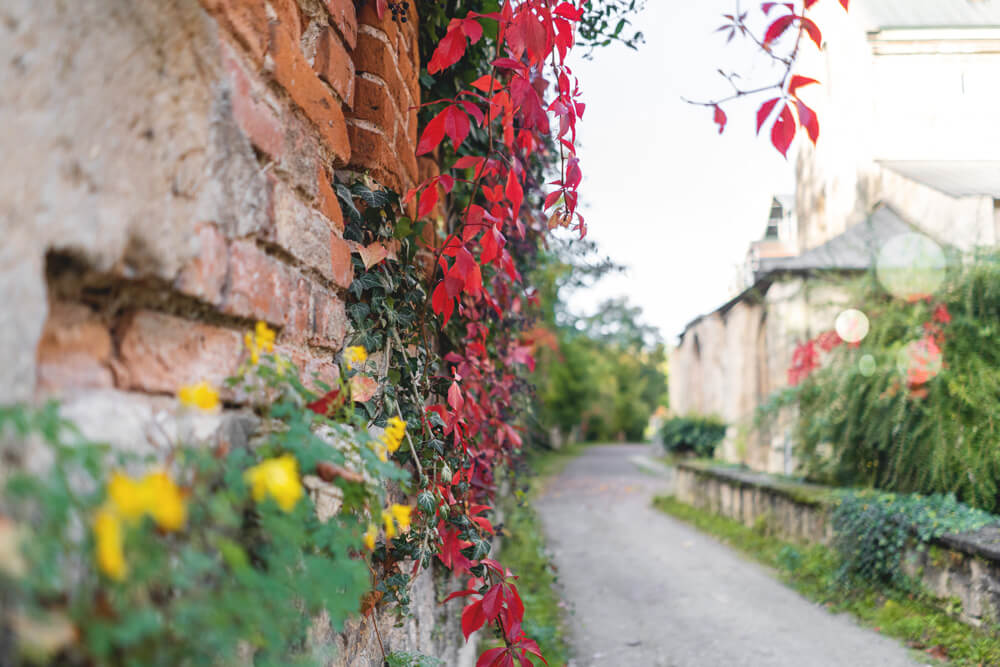

This time, despite a long search, we were only able to Solve 1 of 3 tasks. For one of the questions, we had to decipher the inscription on a gravestone in the cemetery, which was no longer possible due to the weather conditions and lots of moss. For the second question, we were asked to look for initials above a small door. We were sure we were in the right place, but couldn’t find any.
We were a bit disappointed that we weren’t shown the correct answers. We would have liked to know where to look. Nevertheless, we highly recommend a visit to this historic site. The cloister can currently only be visited by taking part in a guided tour. In addition, various themed tours take place regularly (cost: €6.00 per person).
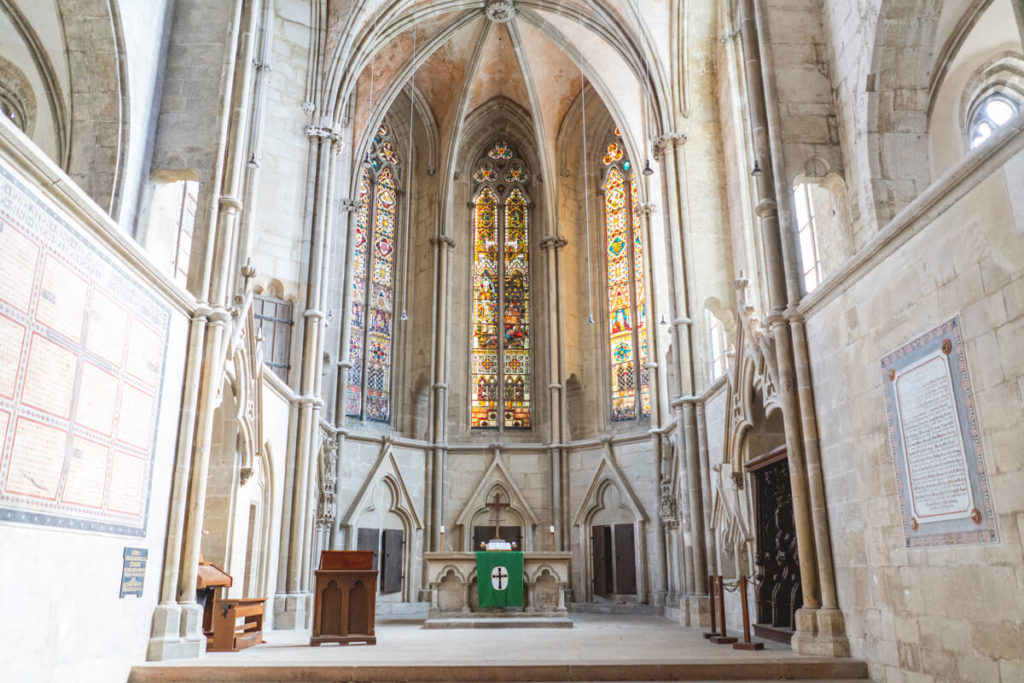

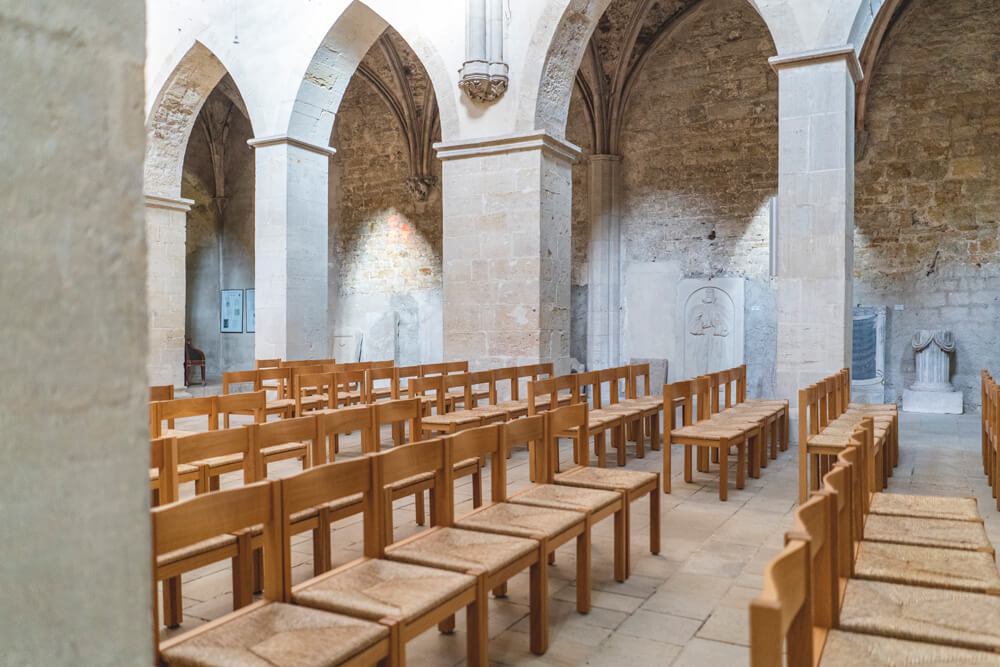

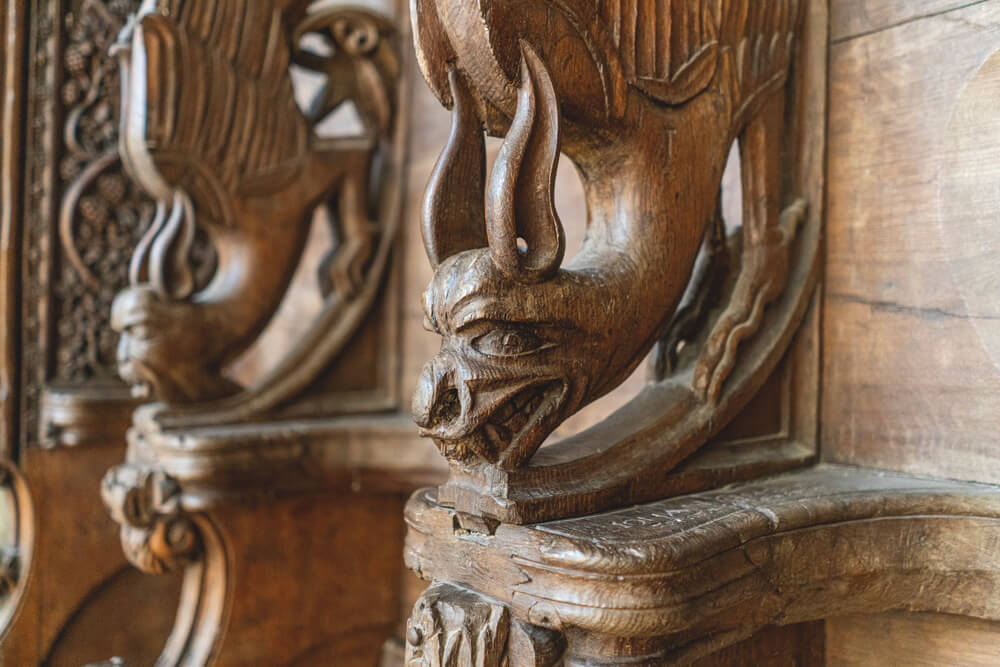







- 3 tasks in Schulpforta
- Free entry
- Difficulty level: difficult
5. Saale-Unstrut Highlights: Bad Sulza
During our short tour through the Saale-Unstrut region, we also stopped in the spa and wine town of Bad Sulza. Here, Moritz led us through the beautiful spa gardens and to the Louise graduation tower, among other things. But let’s start from the very beginning. Bad Sulza has a roughly thousand-year-old settlement history and is today a popular place for relaxation and winemaking. Brine was once boiled to make table salt, which brought prosperity to the small town. It wasn’t until 1730 that the doctor Gregor Gerhard discovered the health-promoting effects of brine, and since 2004, Bad Sulza has been officially recognized as a brine spa.
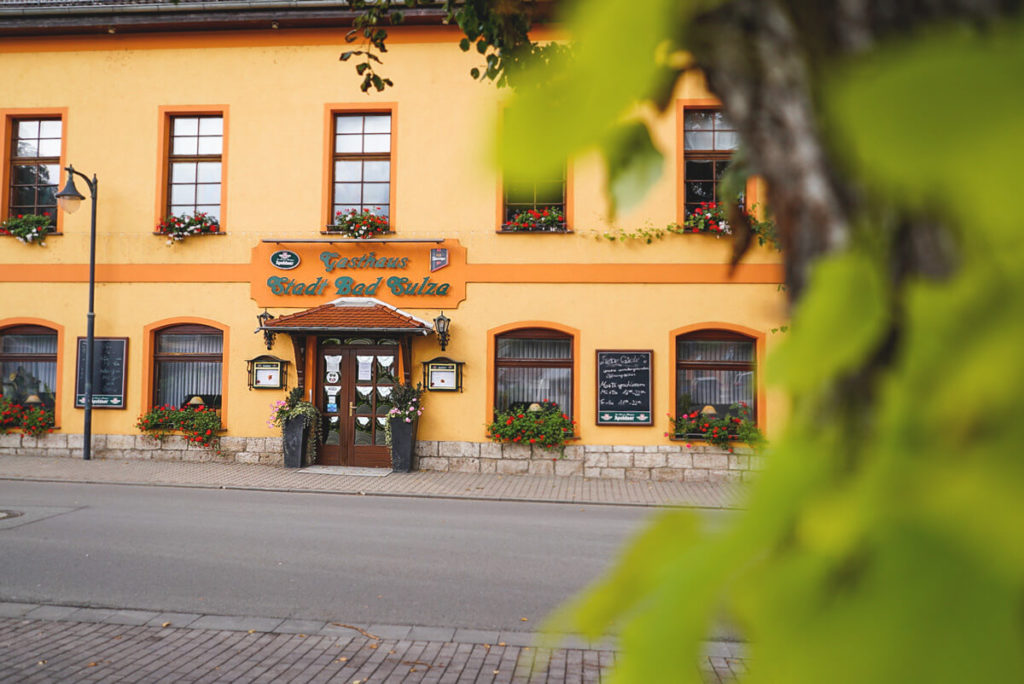

Bad Sulza Spa Park
Moritz sent us to the spa park, designed in the style of an English landscape park, where we learned more about the town’s history and had to complete a few tasks. The tourist information office is located in the former inhalatorium (a very beautiful building, by the way), which opened in 1903. Brine from the nearby Carl-Alexander-Sophienquelle spring was used to operate the inhalation room. This allowed spa guests to improve their health in the various inhalation rooms. Be sure to check out the photos on the walls of the tourist information center and let the friendly staff tell you more about the history of the building. It’s truly fascinating! We strolled further through the spa park and reached the historic drinking hall, which was built in the Art Nouveau style and inaugurated in 1910. In the past, the spa doctor prescribed a large daily sip of Bad Sulza brine for his patients. And you can still enjoy it today.
Inside the drinking hall, there’s a brine drinking fountain with brine from the Carl-Alexander-Sophien spring. Take a moment and treat yourself to a sip of the drinking brine. Drinking cups, seating, and further information are available on site. The Trinkhalle is open daily from 10 a.m. to 4 p.m. and is free to enter.
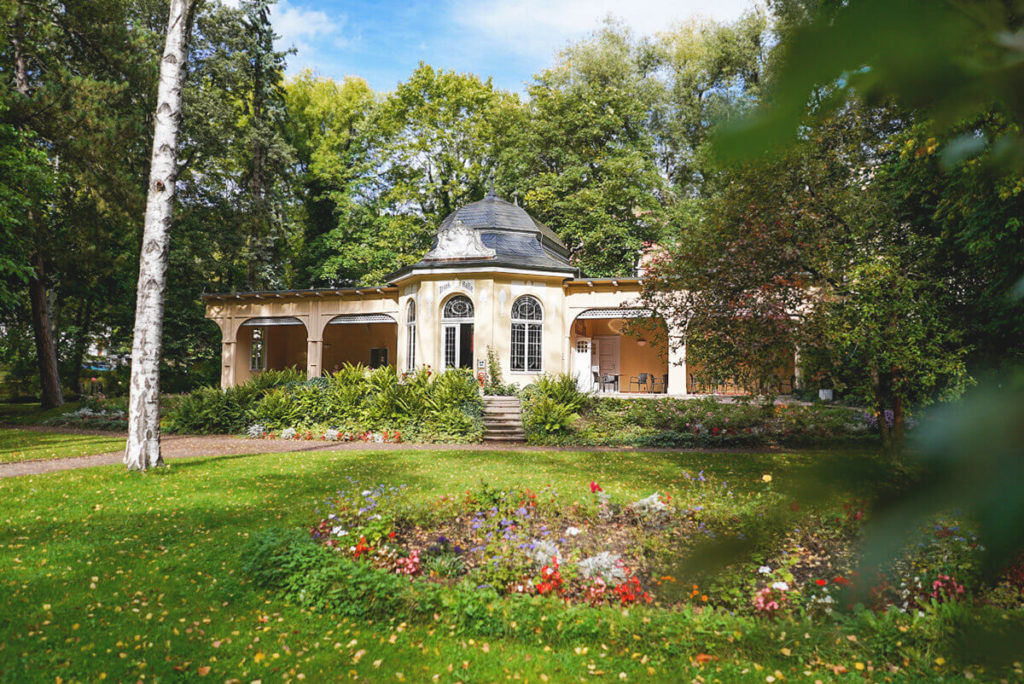

Birch Avenue and Swan Pond
We strolled for a while through the spa park and the small alleys of the town center, enjoying the beautiful weather and the warm rays of sunshine on our skin. We particularly liked the birch avenue and the swan pond with its fountain. Here in the spa park, you can wonderfully unwind and recharge your batteries.
In Bad Sulza, you’ll also find the very well-known and popular Toskana Therme, which we unfortunately didn’t have time to visit. At the “Pension Am Schwanenteich” restaurant, we treated ourselves to a large piece of cake and a delicious coffee.




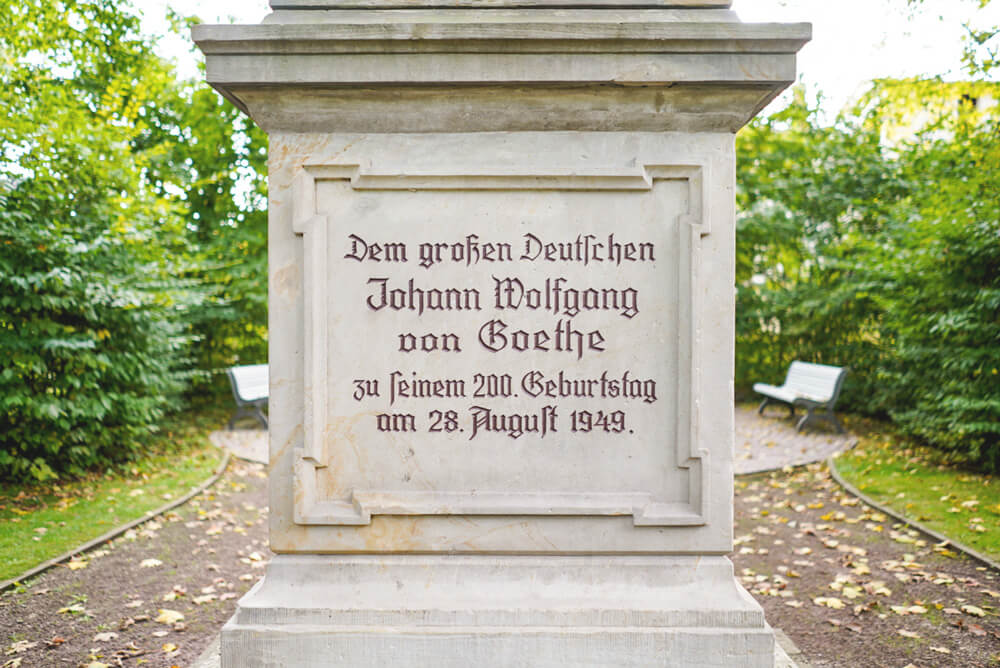

Gradierwerk Louise
From the spa park we set off to the Gradierwerk Louise, which is located about 1 kilometer north of the spa gardens. This structure was built in 1753 and served exclusively for industrial purposes. Today, things are completely different, as the approximately 30 remaining historic graduation towers in Germany serve almost exclusively health and recreational purposes. The Gradierwerk Louise is 142 meters long and has a walkway and an atomizer hall. The roof makes it suitable for a visit even in bad weather.
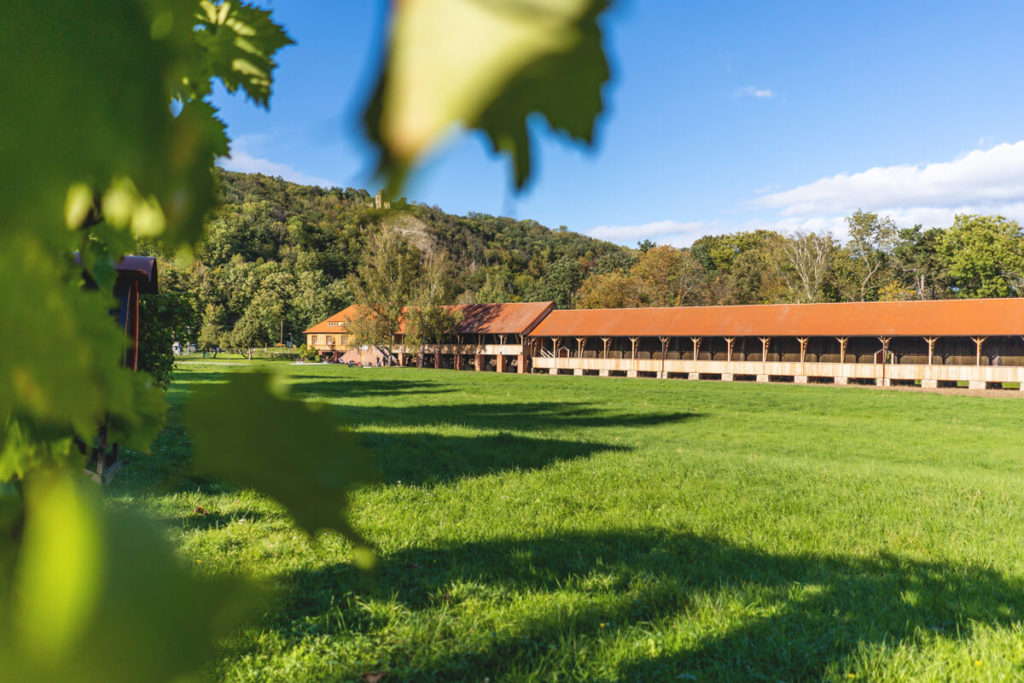

Perhaps you’re now wondering how such a graduation tower actually worked then and now? A graduation tower once had the task of increasing the salt concentration of the brine. The principle was as follows: The higher the salt content in the brine, the less water had to evaporate during boiling. This allowed for faster salt extraction and also required less fuel.
The brine runs over the enormous blackthorn walls several times so that the water contained in the brine evaporates. At the same time, the brine is also purified, as the impurities settle on the thorns. As the water evaporates, the finest salt particles are released into the air, which particularly promotes open-air inhalation. The remaining, more concentrated brine was then transported from the graduation tower via pipelines and boiled in so-called boiling pans.
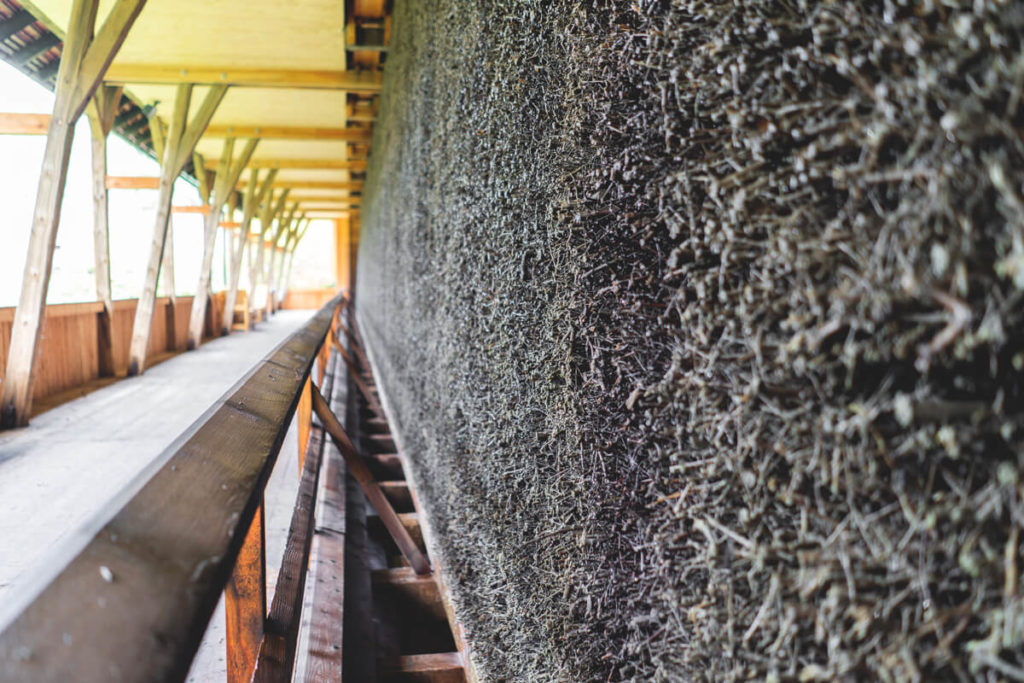

Unique Atomizer Hall
We strolled along the walkway, taking deep breaths and relaxing on the benches and lawn. A little later, another highlight awaited us in the atomizer hall. We entered the room and couldn’t even see a meter ahead because of the brine mist. Here, the brine is constantly atomized so finely that the salt particles reach deep into the delicate bronchi.
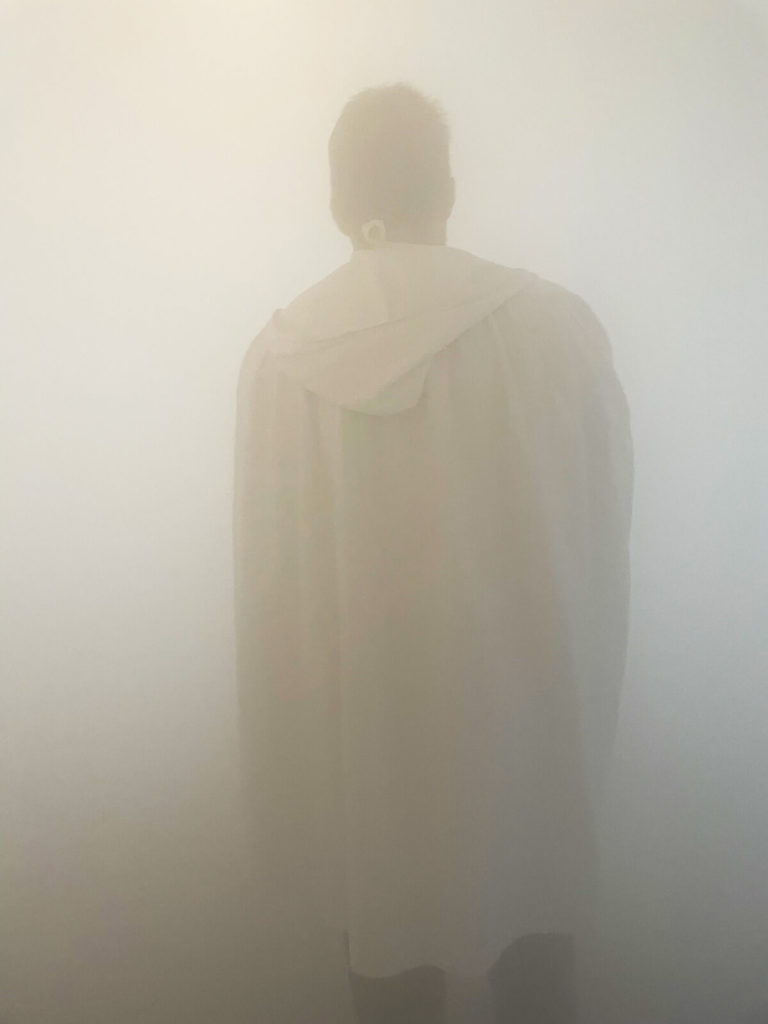

And so we walked very slowly in a circle (orientated by lights on the floor), breathing in and out the fine saline mist. It was really strange that we could hear the other people in the room but not see them. So, a little caution is advised when walking.
Even here in the atomizer hall, Moritz had a task for us, which we could solve by looking out the window. You can watch our video about it in our story highlight on Instagram. After a lovely afternoon in Bad Sulza, we returned to our holiday apartment and enjoyed a relaxing end to the day.






- 4 tasks in Bad Sulza
- Spa gardens, Louise graduation tower
- Difficulty level: easy – medium
6. Bike tour along Lake Geiseltal
On our last day in the Saale-Unstrut region, we drove from our accommodation in Freyburg to Mücheln on Lake Geiseltal. The Geiseltalsee is a open-cast mining lake located in southern Saxony-Anhalt and, with an area of almost 19 square kilometers, is the largest artificial lake in Germany.
We parked the car in a large paid parking lot above the harbor and then walked down to the harbor office. HereWe rented two bikes (€10 each) to explore the area a bit. The weather was on our side that day, and we were able to fully enjoy our bike tour under blue skies and sunshine.
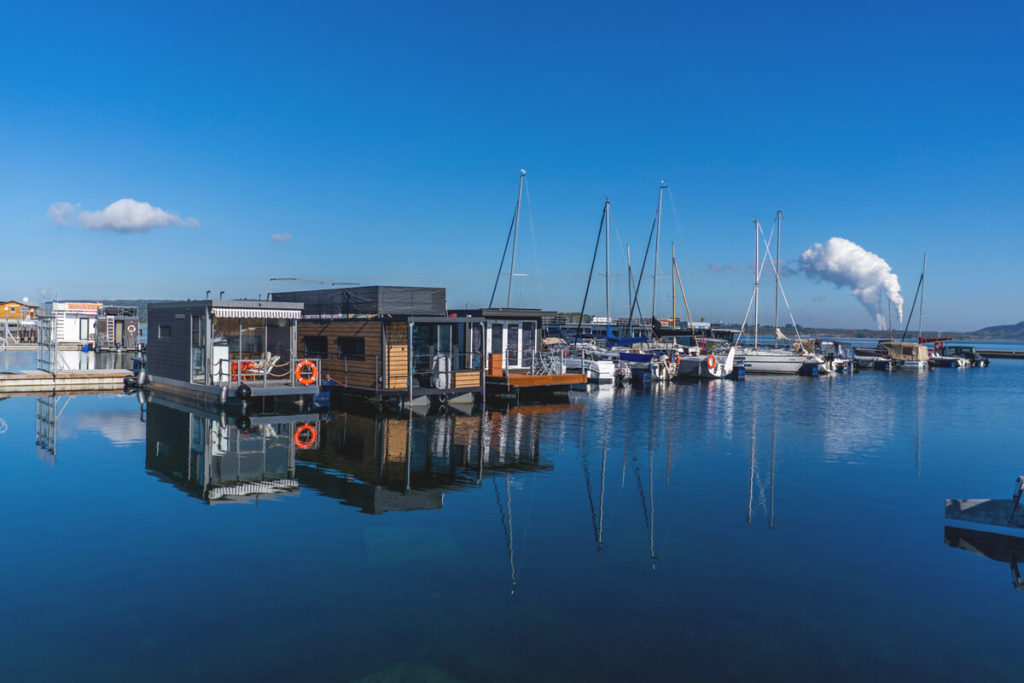

Harbor of Braunsbedra
We cycled along a paved road along the shore towards Braunsbedra. Along the way, we discovered the maze “Im Urpferdchen”, which is perfect for a short and fun break (free of charge). After about 30 minutes, we reached the harbor in Braunsbedra. We parked our bikes and strolled across the 200-meter-long pier. At the end of the bridge, there is a viewing platform and seating. We soaked up the soothing rays of sunshine once more, took a few beautiful photos, and strolled back to our bikes.
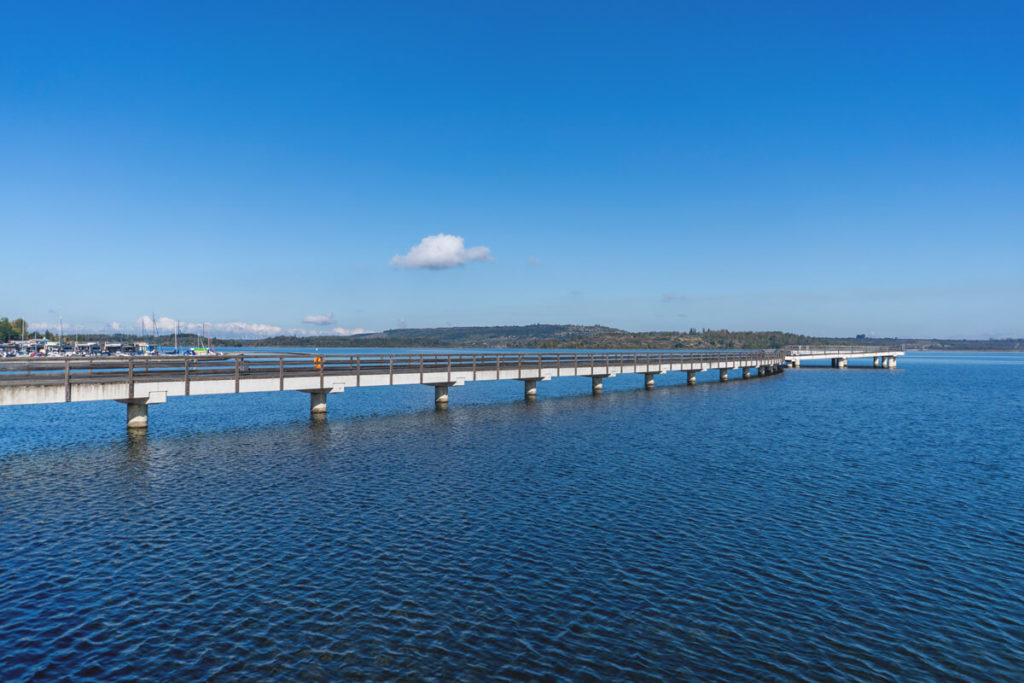

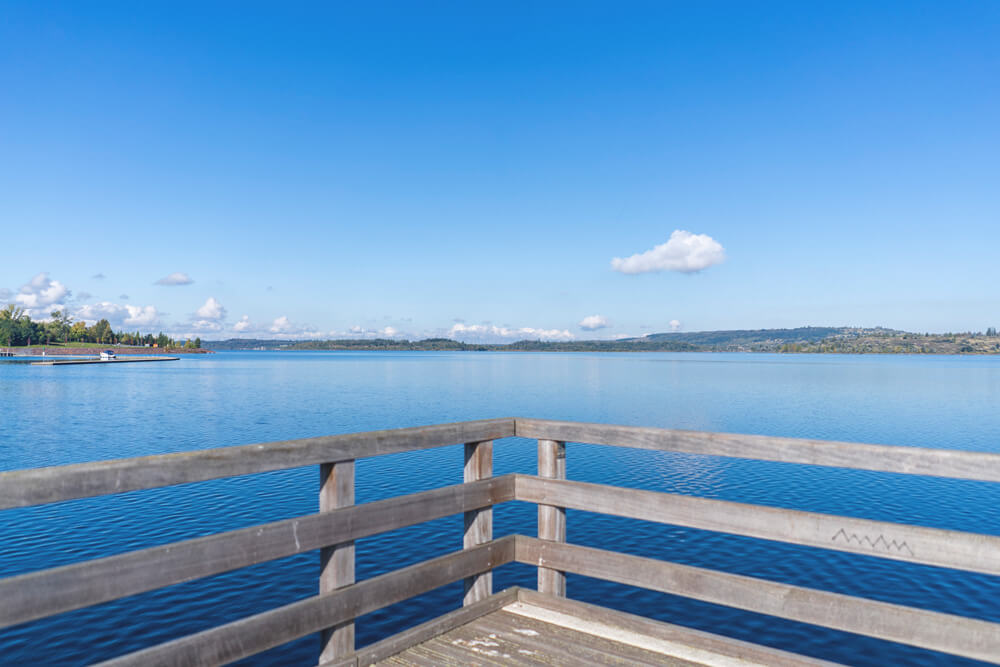

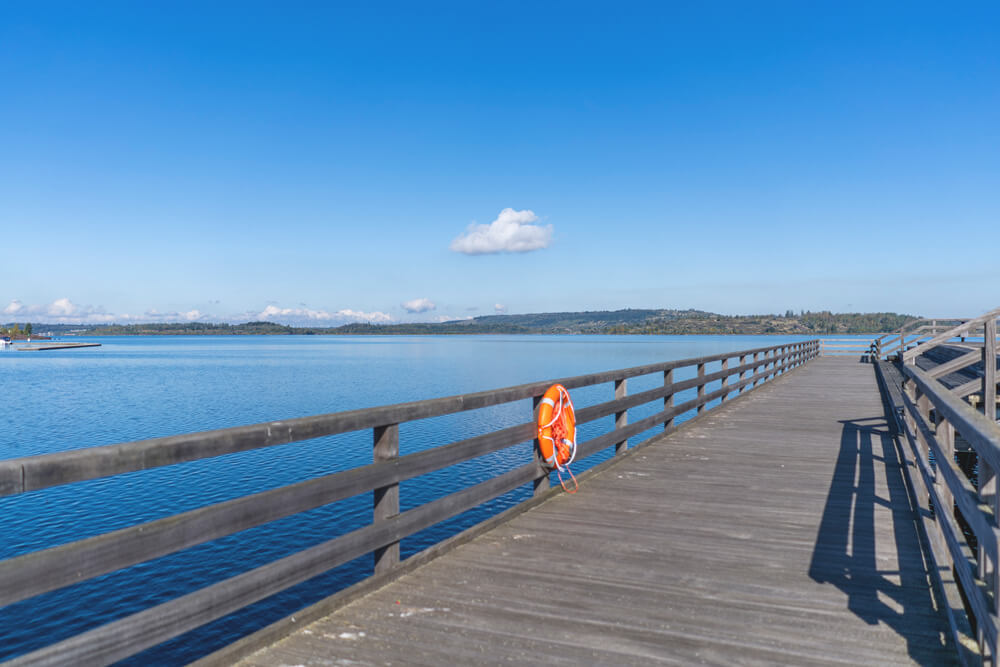

At the harbor of Braunsbedra is the cool Bellini 79 beach bar, which is particularly busy in the summer months. With a delicious cocktail, you can admire the beautiful sunset and end the evening in a relaxed atmosphere. Right next door is the tourist information office, and above it, the Braunsbedra observation tower, which offers a magnificent view of the lake (free of charge).
You can also rent motorboats, SUPs, rafts, houseboats, and bicycles on site. With plenty of sunshine in our luggage, we made our way back to Mücheln, returned the bikes, sipped another coffee, and strolled along the harbor for a while. Here, too, we discovered many houseboats for rent. Cruising across Lake Geiseltal in one would certainly be a wonderful experience.
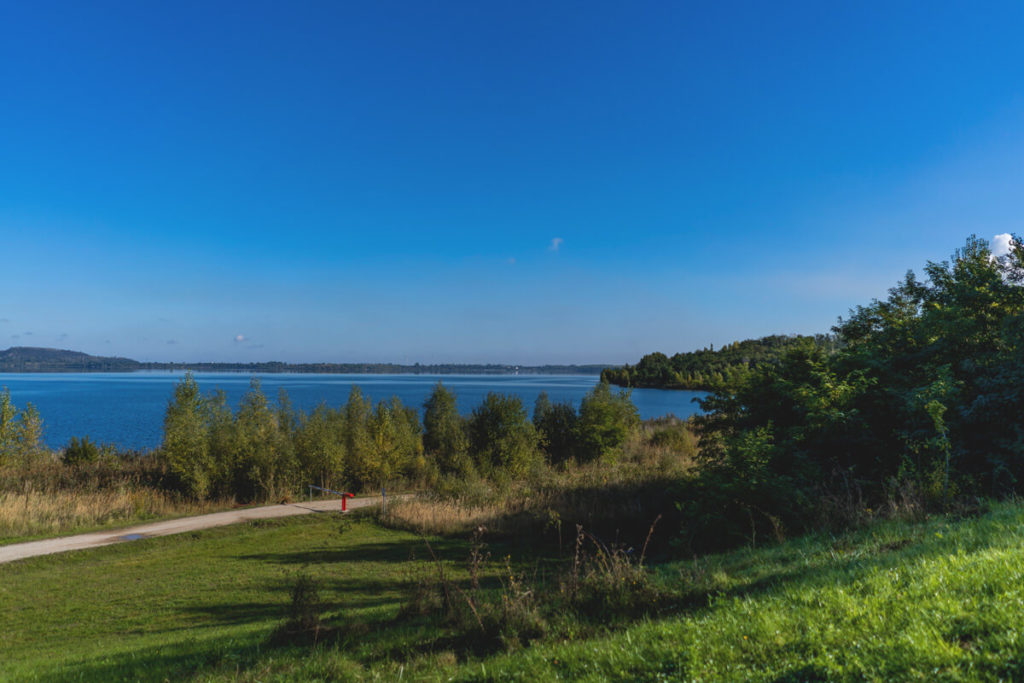

7. The Saale-Unstrut Wine Region
As already mentioned at the beginning, the Saale-Unstrut region is also called the “Tuscany of the North.” This is mainly due to its gently rolling landscape, picturesque river valleys, and numerous vineyards and steep terraces. With 1600 hours of sunshine and 500 mm of rainfall per year, the grapes thrive here under optimal conditions. More than 60 wineries make the region’s wine experience a reality, offering tours, seminars, and wine tastings.
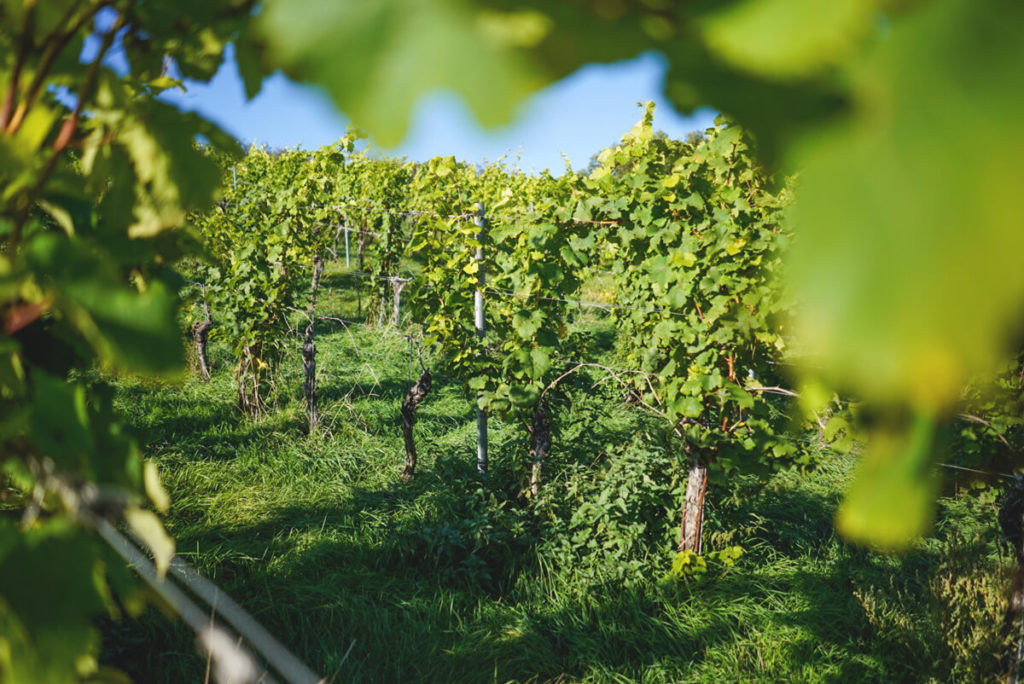

Regional specialties include fine Pinot Blanc and Pinot Gris, earthy Silvaner, and delicately spicy Müller-Thurgau. Dornfelder, Pinot Noir, and Portugieser can also be found locally. The so-called “Saale-Unstrut Wine Route” leads past vineyards, wineries, and wine taverns, and is ideal for a hike or bike ride. Unfortunately, we didn’t have enough time at the end, so we only visited a small, hidden winery near Lake Geiseltal.
Wine highlights in the Saale-Unstrut region:
- Saale Wine Hike (25 km)
- Vine Blossom Hike around Höhnstedt (during the grape blossom season in June)
- Cycling along the wine route on May 1st
- Rotäppchen sparkling wine cellar in Freyburg
- Saale Wine Mile at Whitsun
- Open Wine Cellar and Vineyard Day (1st weekend in August)
- Wine Festival in Bad Sulza (3rd weekend in August)
- Wine Festival in Freyburg (2nd weekend in September)
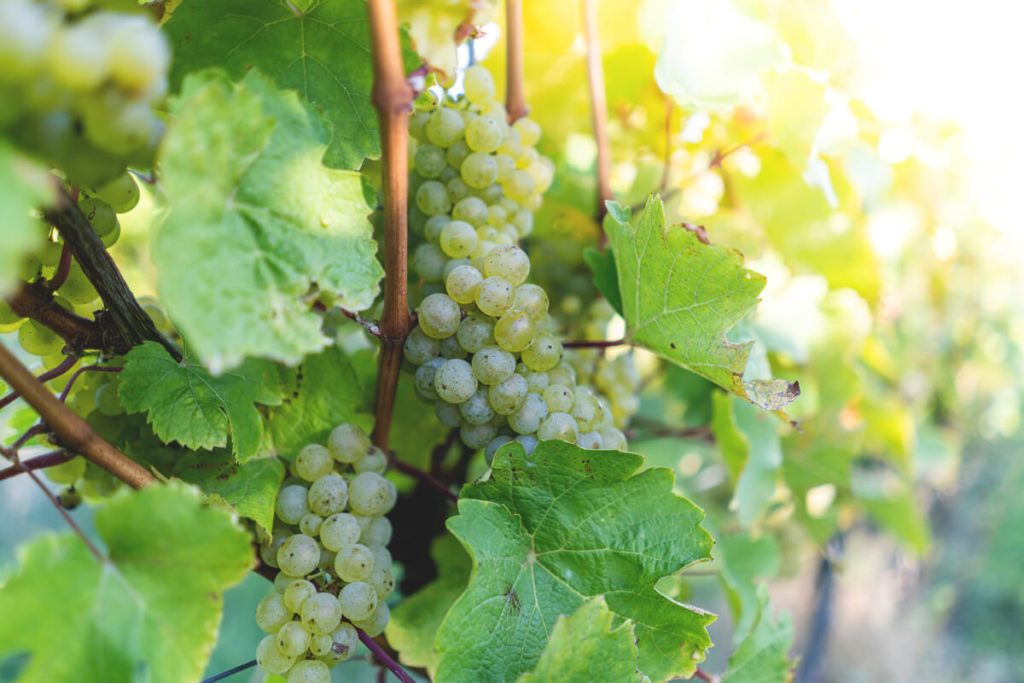

Thürkind Winery
Before our journey home, we absolutely wanted to visit a winery, so we set out to find one. After a few minutes of research, we found the Thürkind Winery on Google Maps, which was only 15 minutes from Geilseltalsee. This winery was founded in 1991 and is now run by the Thürkind family in its third generation.
We parked the car in front of the farm entrance and looked around cautiously. Since we were traveling outside of the season, there wasn’t much going on here either; the summer tourists had long since left. We learned that the wine tavern is only open in summer.
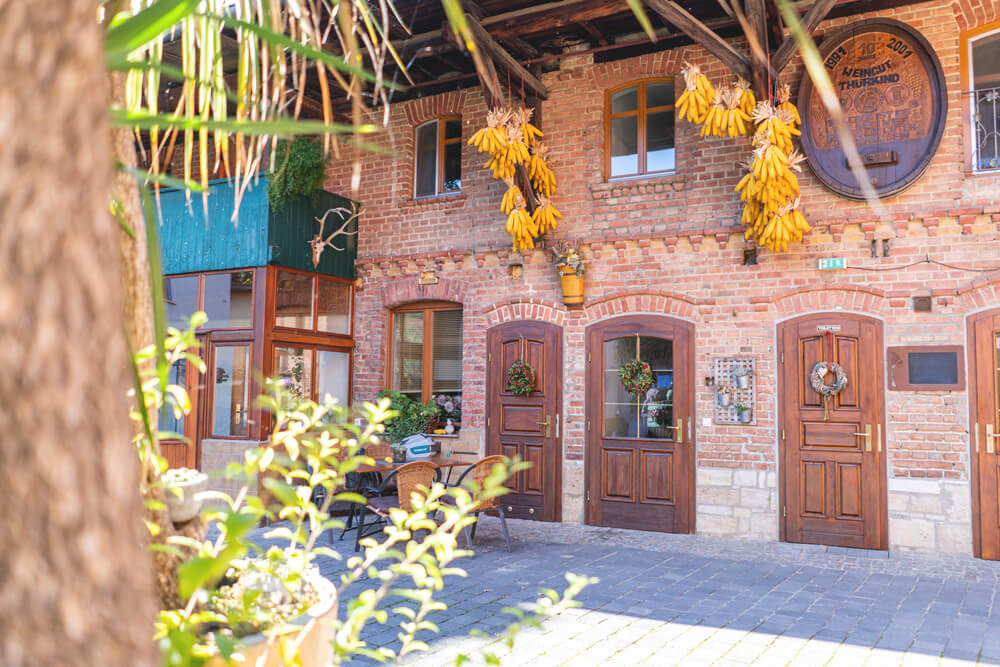

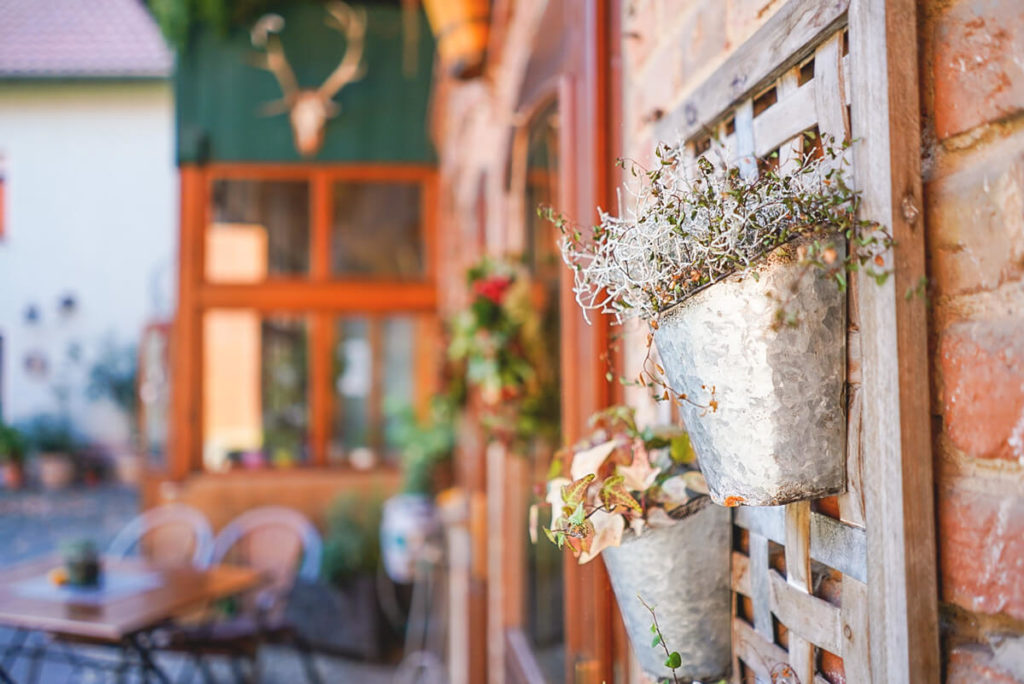

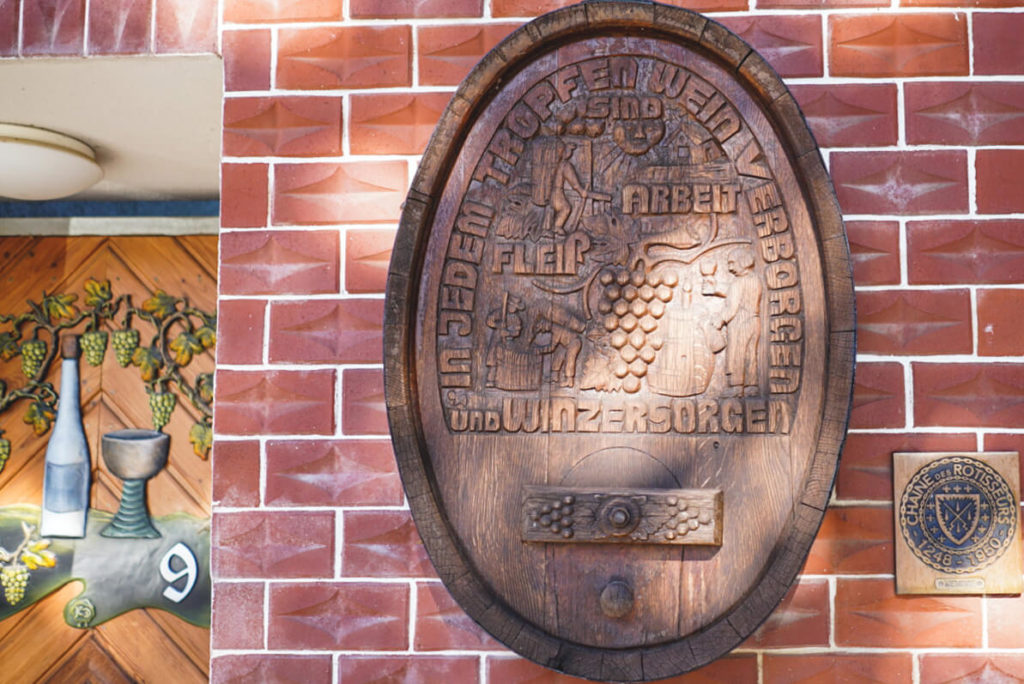

In the beautifully designed courtyard, we discovered a very modern wine shop, A few places to sit, a dog, and a very cuddly cat. We were greeted very warmly and even offered a coffee and a piece of homemade Bienenstich (bee sting). The smell of wine permeated the air, and through an open door, we even spotted a few huge wine tanks.
After our cozy coffee break, we were able to browse the finished wines and other winery products in the wine shop. Since we had a long drive back to Rostock ahead of us, we skipped a wine tasting this time. We’ll make up for that on our next visit.
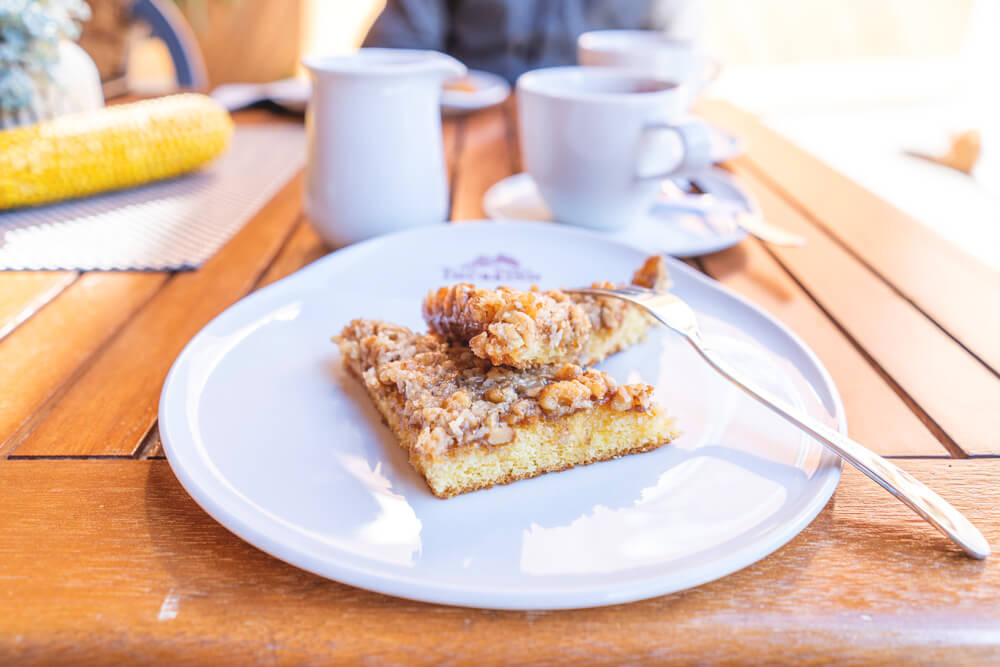

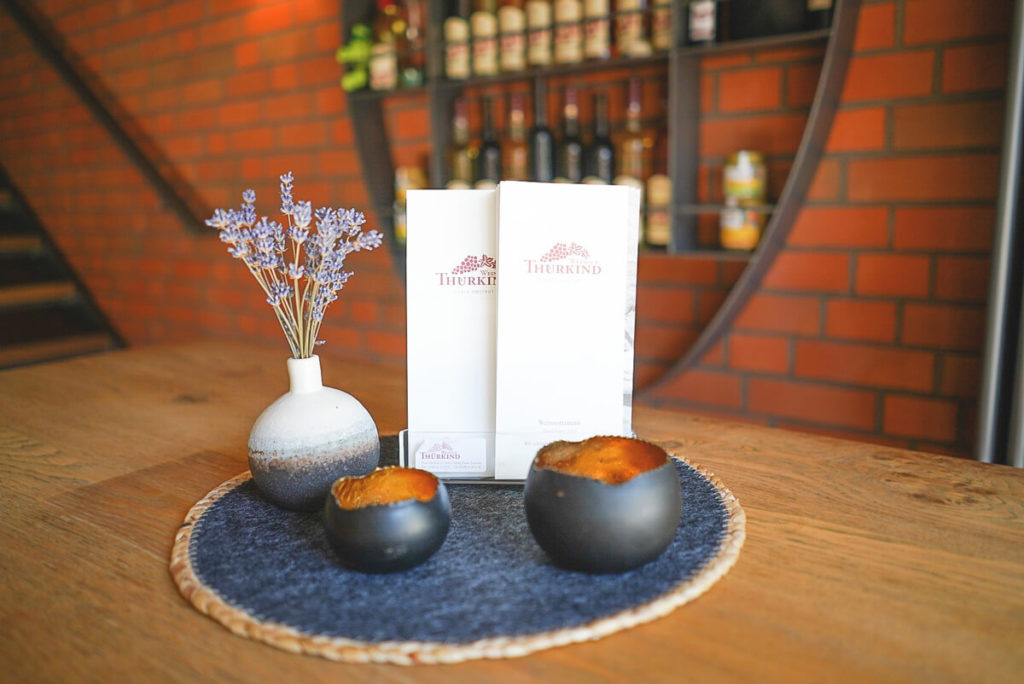

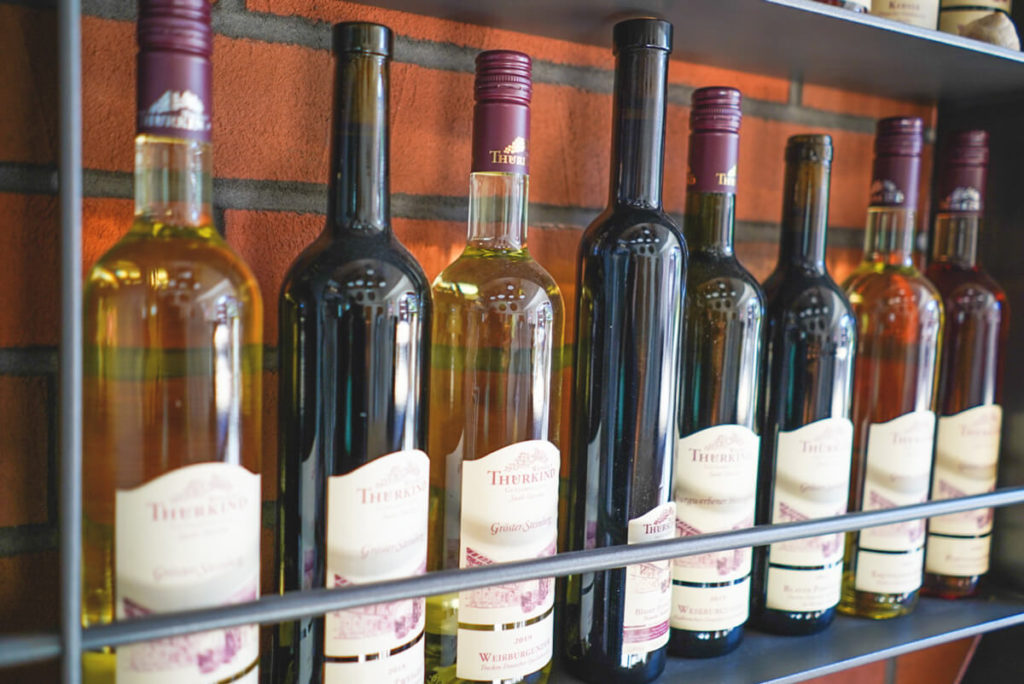

More sights & Highlights
During our trip through the Saale-Unstrut region, we obviously couldn’t see all the highlights and sights. There’s still much more to see and discover, so we definitely have to come back. We would have loved to see the Sky Disc, the Goseck Solar Observatory, and the Dornburg Castles. But what hasn’t happened yet can still happen. Our readers recommended the following highlights:
- Nebra Sky Disk
- Goseck Solar Observatory
- Goethestadt Bad Lauchstädt
- Weißenfels and Zeitz
- Saale-Unstrut-Triasland Nature Park
- Dornburg Castles
- Höhnstedt Vineyards
- Memleben Monastery
Conclusion on the interactive web app
We found exploring the region with the help of the web app pretty cool and innovative. We completed 5 of the 30 stations and were able to solve 20 of a total of 22 tasks. The good thing about the web app is that you can explore the stations in any order and jump in and out at any time. So, at some places, we simply left our smartphones in our pockets and didn’t solve any tasks.
We also found the narrator Moritz, who guided us through the story and the stations, very likeable. Also worth mentioning is the ease of use, the quick login, and the ability to navigate within the web app. Even when we had difficulties with the browser, the development team quickly helped us out.
Our only criticism was that we couldn’t see the solutions if we gave incorrect answers. We would have loved to know the solutions for the Schulpforta station. A few times, we also had to briefly pause the game because we lost reception and couldn’t receive any messages from Moritz. All in all, though, it was a great and fun way to get to know the region.
Our Accommodation in Freyburg
During our exploration of the Saale-Unstrut region, we stayed in the very cozy and beautiful holiday apartment “Ehrau12”. This accommodation is located in the Freyburg Ehrau Mountains in the beautiful Unstrut Valley and is part of a winery. The apartment features a spacious bedroom with a very comfortable double bed, bed linens, and a wardrobe, a living area with a couch and TV, and a dining area with an induction hob, air fryer, refrigerator, coffee maker, kettle, and toaster. The bathroom is equipped with a toilet, shower, towels and a hairdryer.
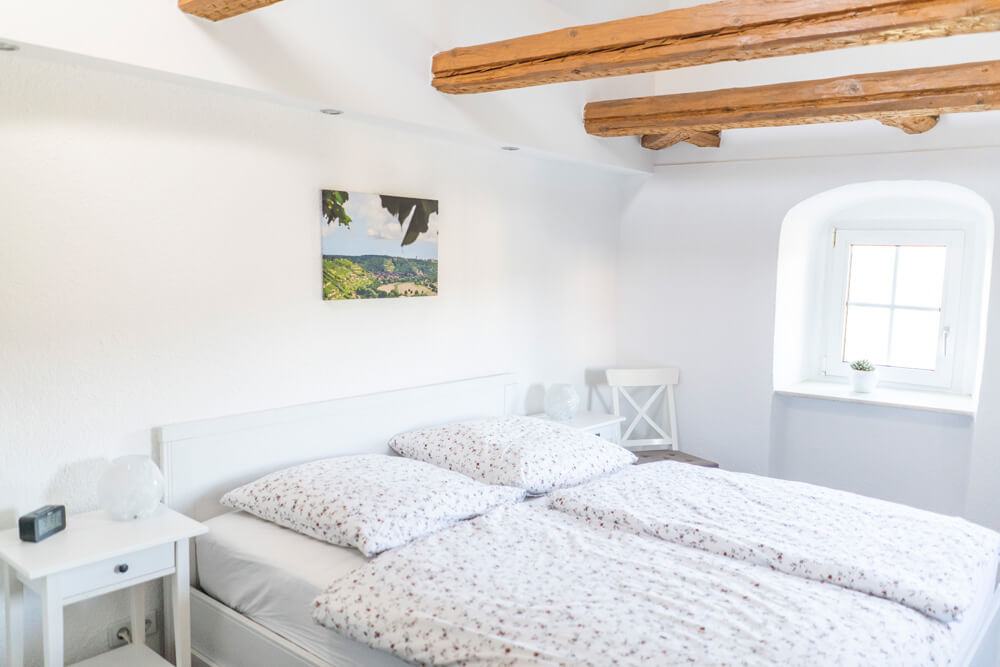

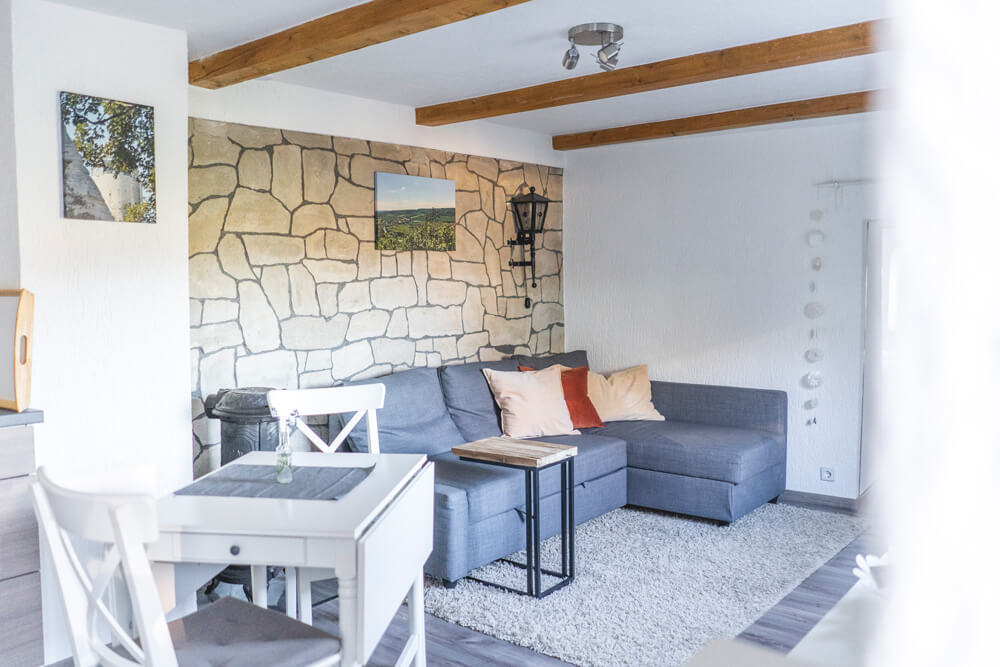

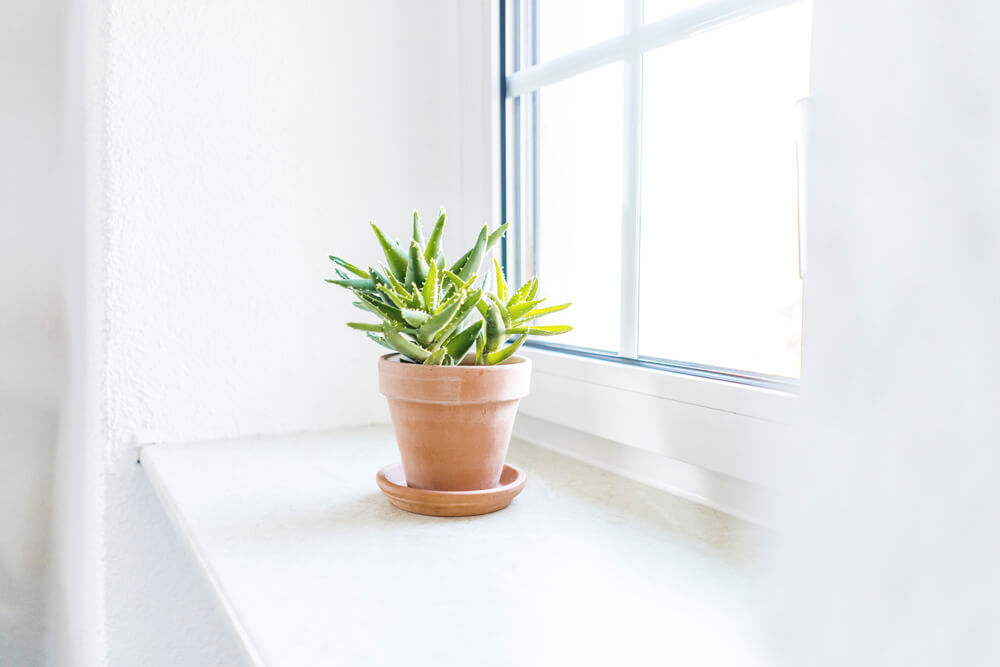

We felt very comfortable from the very beginning We felt very comfortable in this accommodation and especially liked the beautiful view of the vineyards. However, we must also mention that a federal highway runs quite close to the accommodation, which causes a lot of noise and somewhat spoils the view. There is also no Wi-Fi on site. Nevertheless, we can definitely recommend the vacation apartment, as it is very centrally located in the region. It’s only 10 minutes by car to Freyburg, 30 minutes to Merseburg, and only 12 minutes to Naumburg. Click here for accommodation.
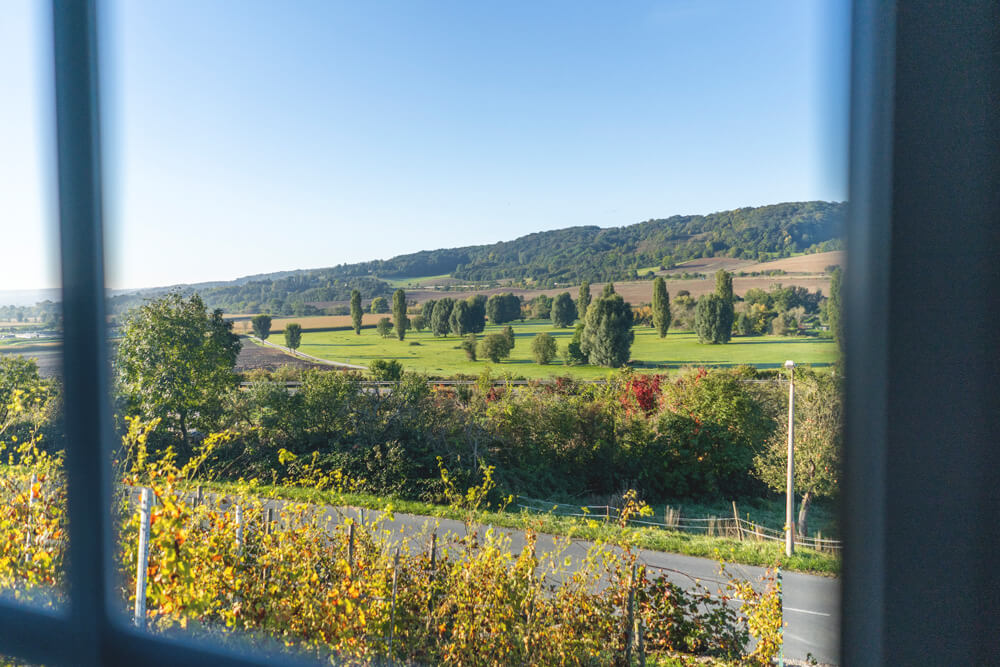

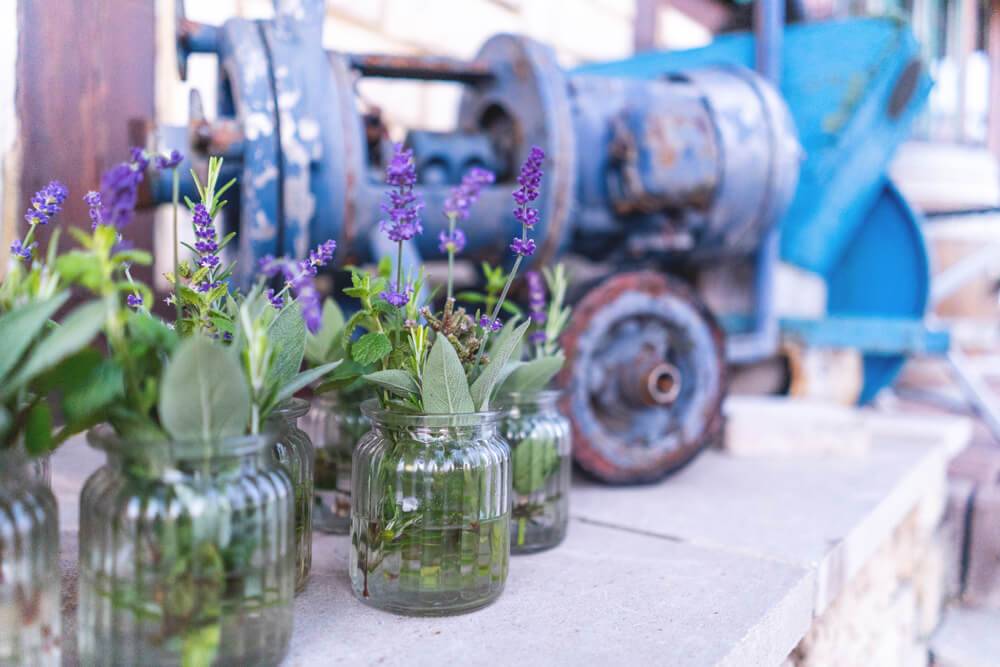

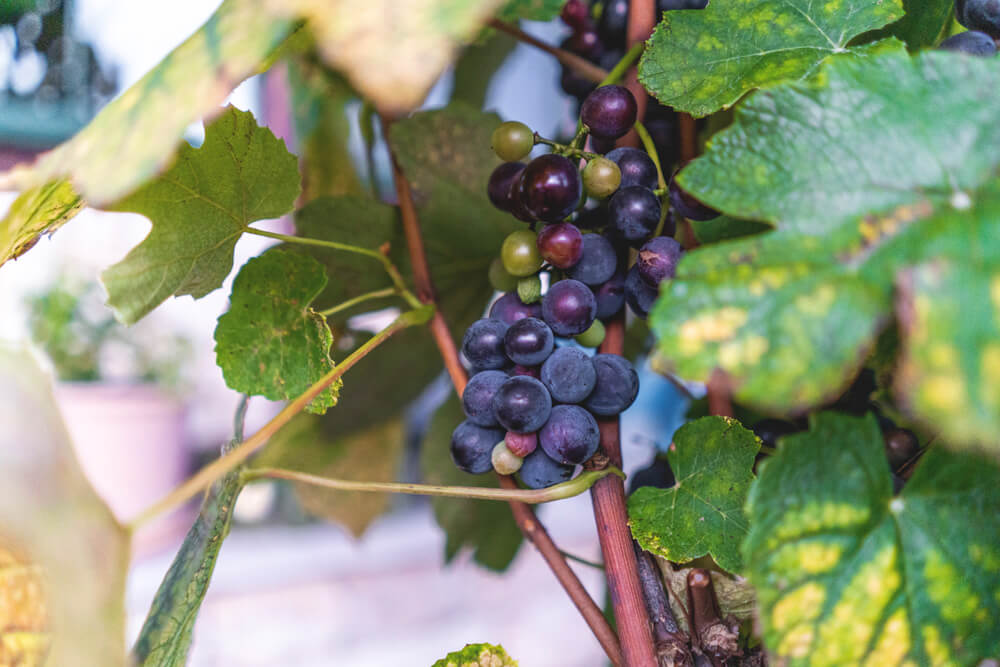

Conclusion about the region Saale-Unstrut
We really hope you enjoyed our article on the Saale-Unstrut region and that you can use some of our tips for your trip. The region offers a fantastic and diverse mix of enjoyment, sightseeing, active holidays, and relaxation. Culture enthusiasts and wine lovers will especially enjoy this region. Have you ever been to the region yourself and have a recommendation? Feel free to share it in the comments; we would be delighted!